WASTE
As Faisalabad lacks an effective sewerage system, the University stands out as the first in the town striving to improve wastewater treatment methods.
Sewerage Water Plant:
The university has its sewage disposal plant, and the purpose of the Plant is to Treat the total raw sewage collected from various university sites; both suspended solids and biodegradable organic matter further reduced through the treatment stages to an acceptable limit. The Plant can produce treated water that meets water reuse standards and the requirements of the University.

Sewerage water is further treated into two ways:
- Water that cannot be further purified is disposed of.
- Following the requisite water analysis, sewage water that can be reused is sent through lines and stored in the tank. A motor is installed to further screen the water where solid waste is removed from it and buried under ground while the water is disposed.
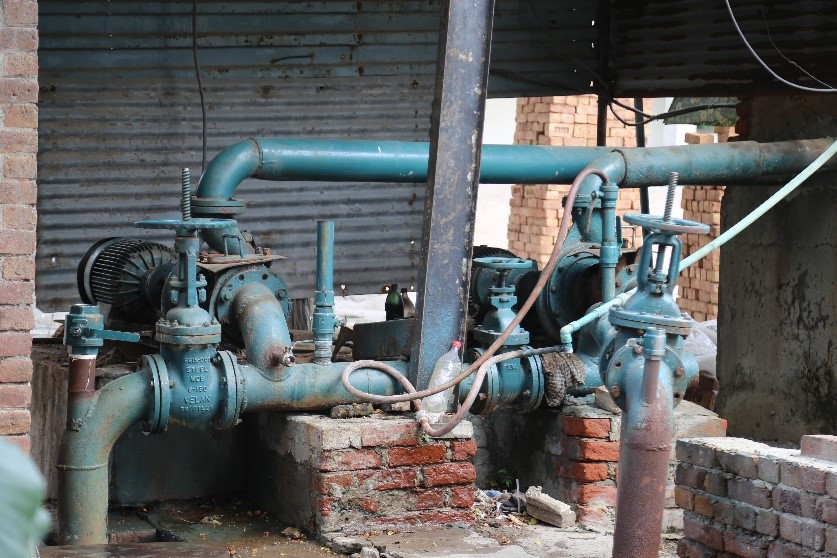
Sewerage Water purifying Pump
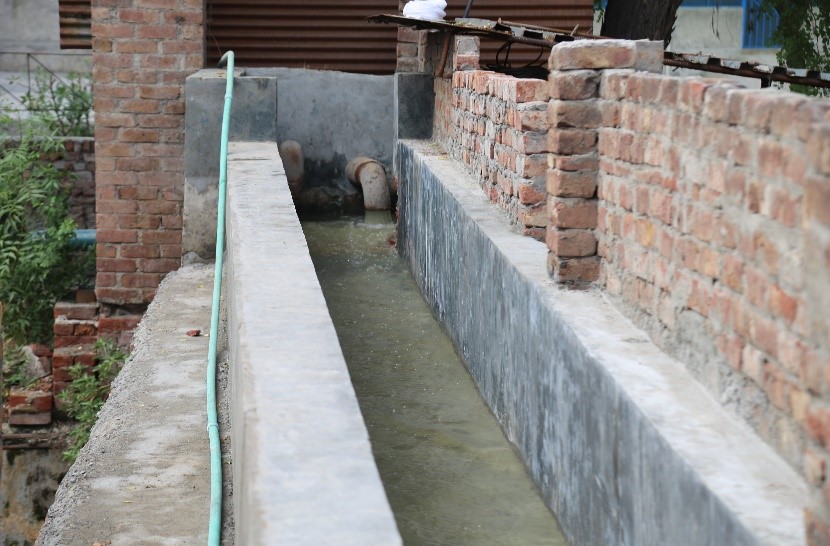
Sewerage Water after screening of water
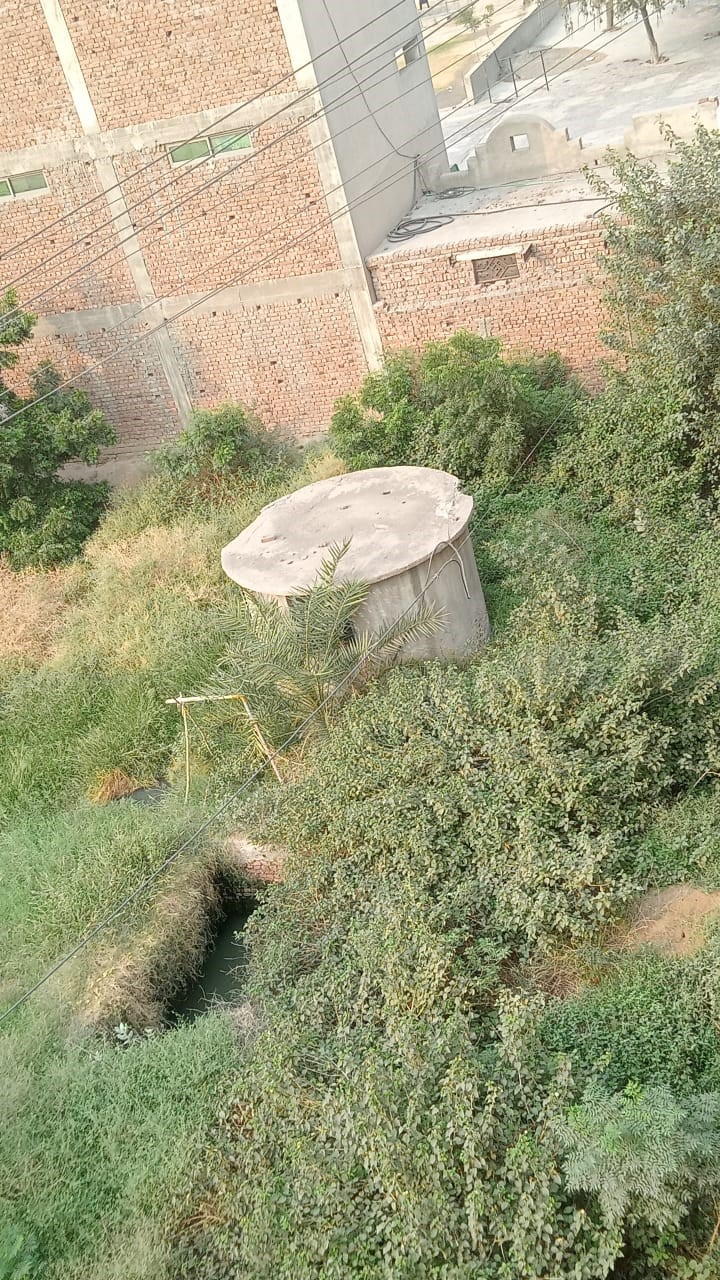
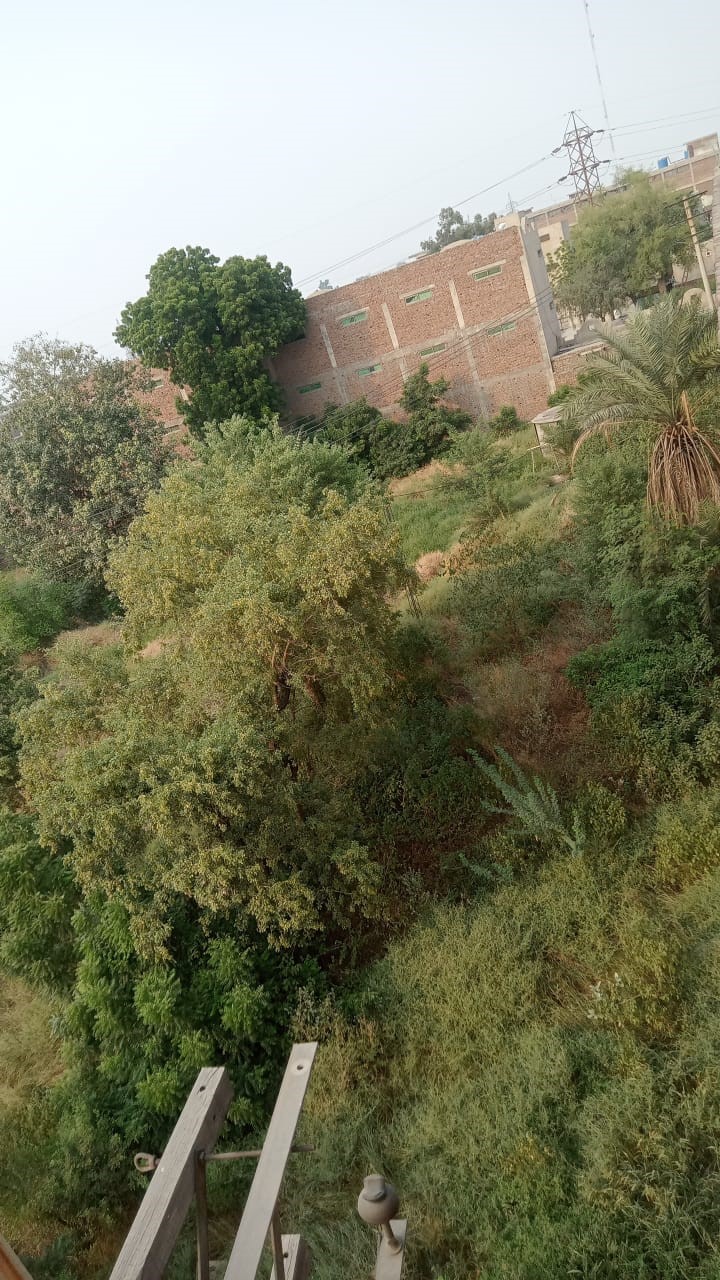
Designated area where screened water is used
The waste that comes from the University Affiliated Hospital is disposed of in accordance with international criteria. In the first step separate bins are placed in the to keep contagious and non-infectious waste products. At the end of each day, all waste material is stored in designated chambers. Separate containers have been set aside for non-infectious garbage. Material is collected in dustbins and then turned over to a company (a corporation with a contract with the university was formed to collect infectious waste for further disposal).

Room to store infectious material on temporary basis
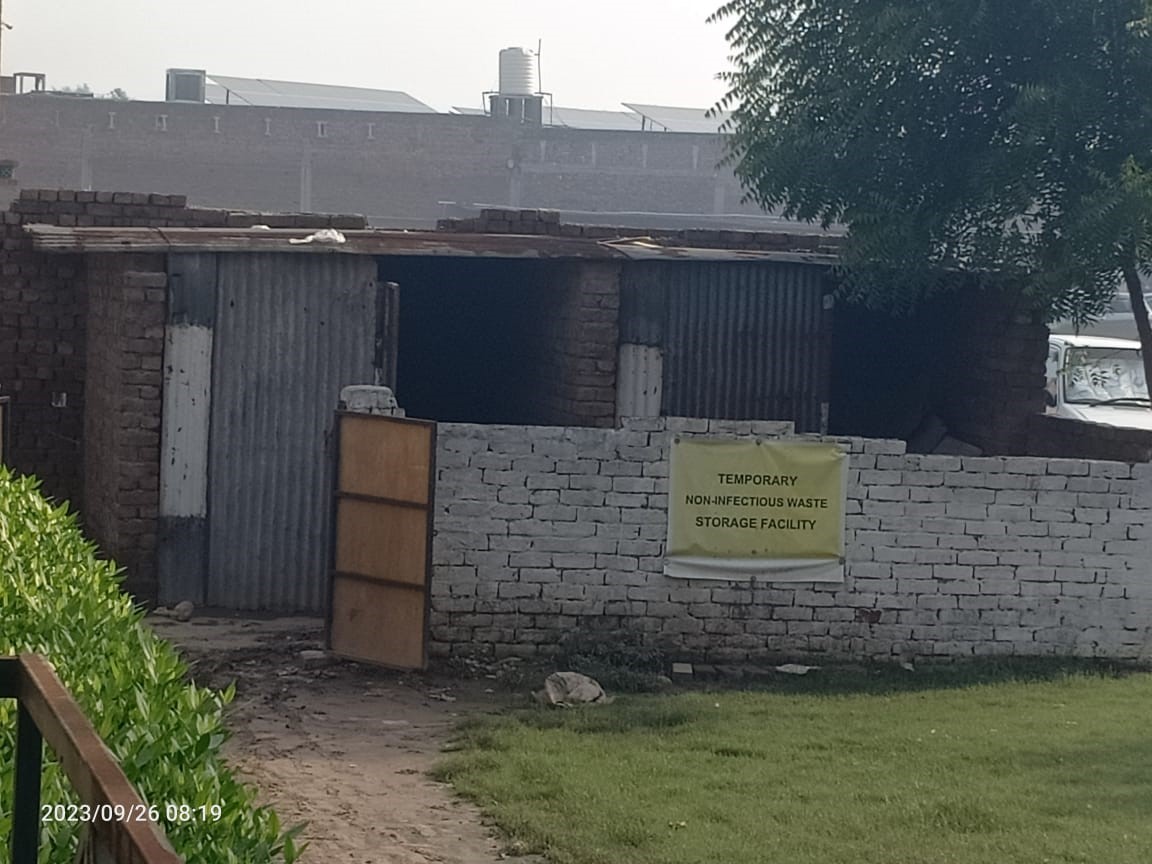
Room to store Infectious material on temporary basis

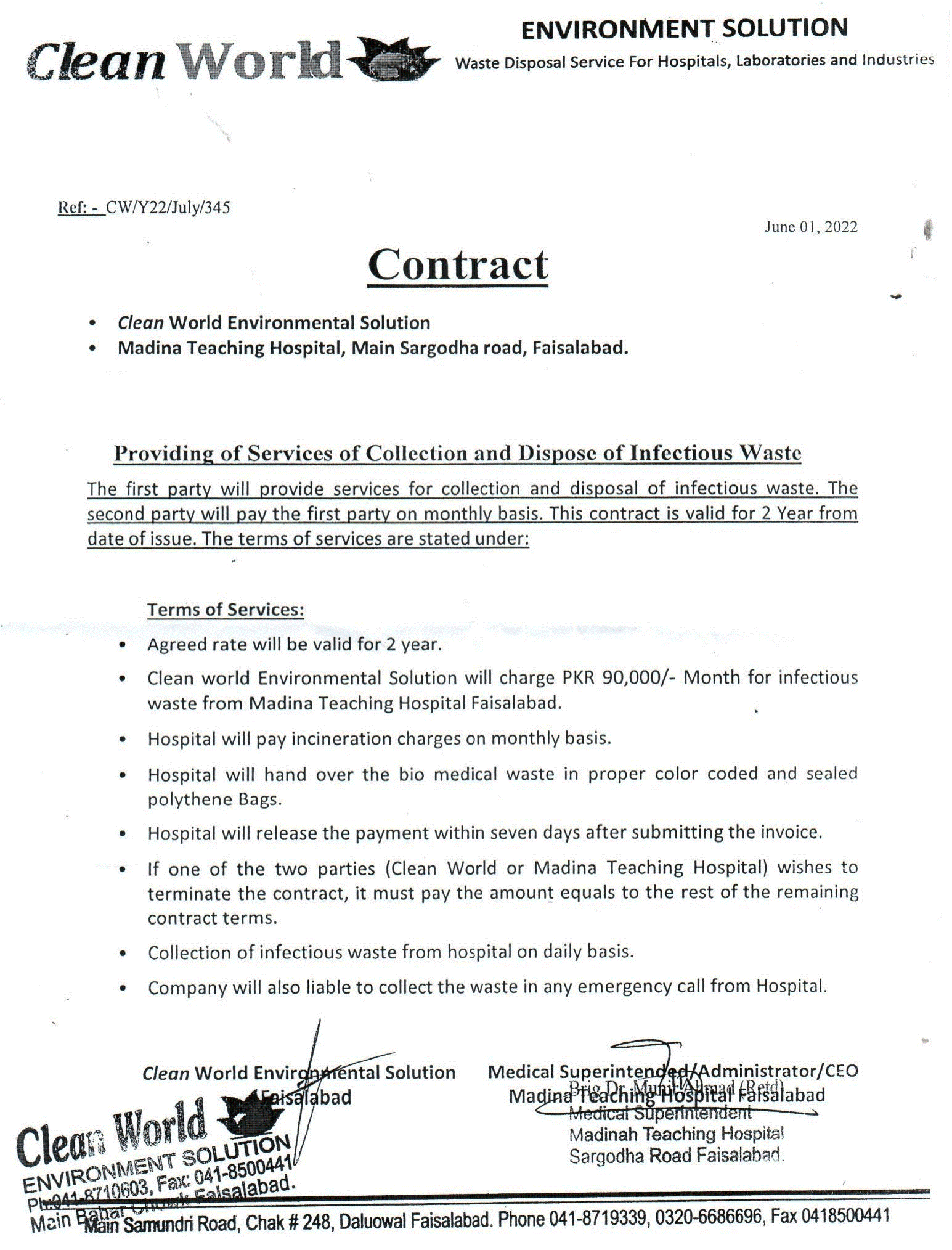
Waste Policy
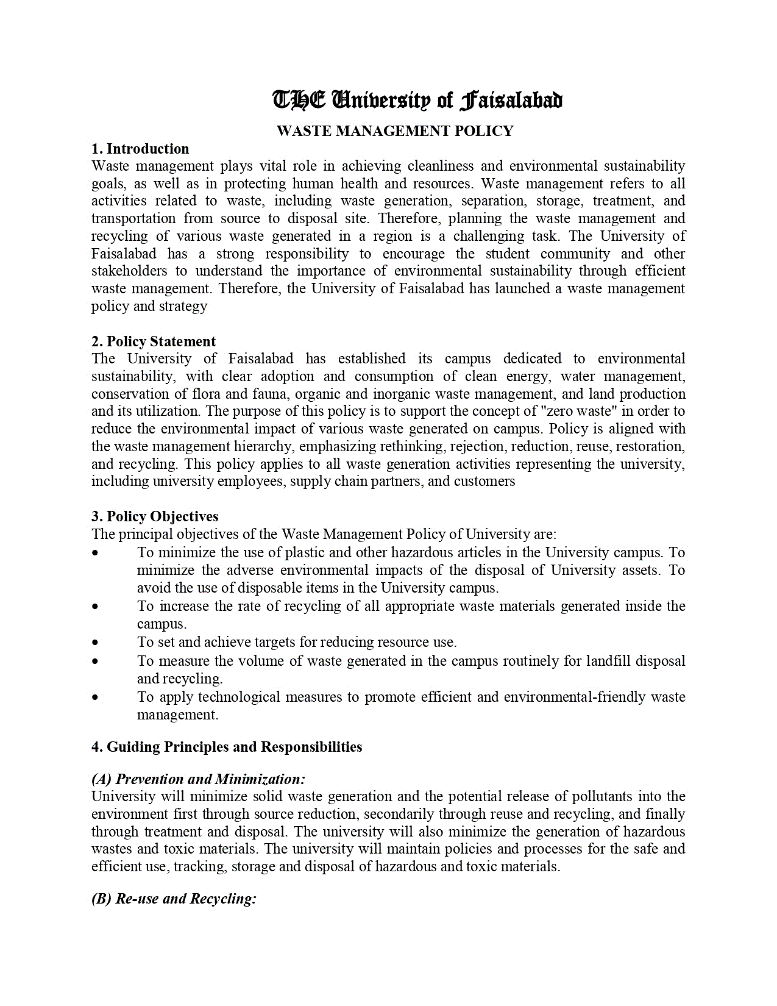

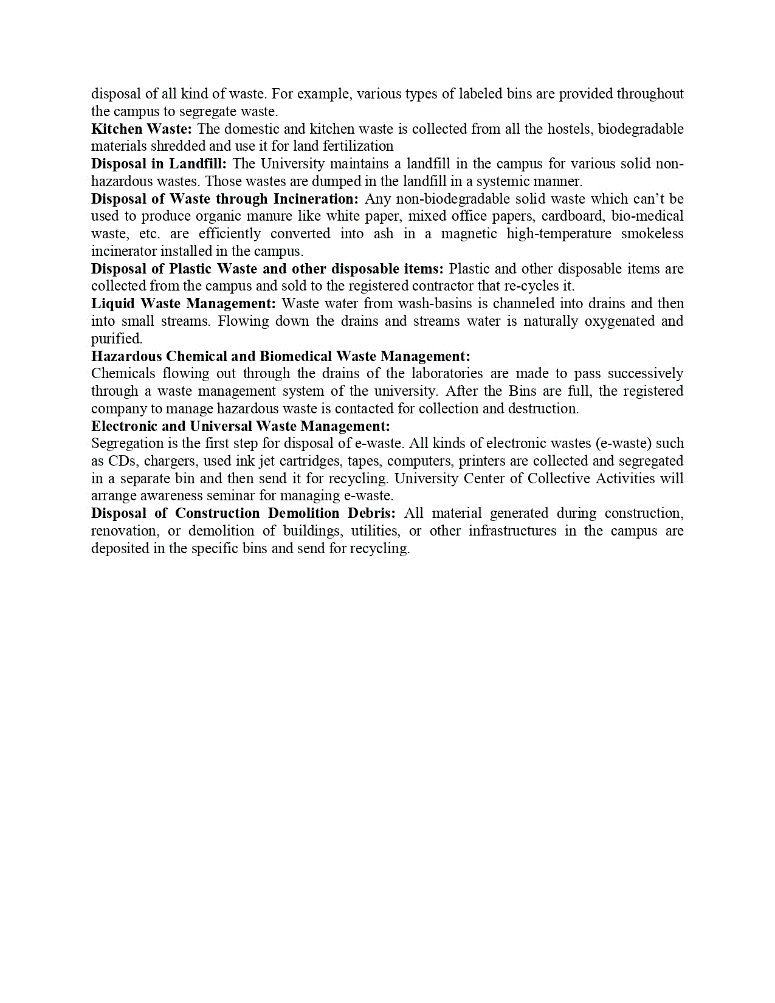
Policy Implementation Impact Last Two year 2022-2023:
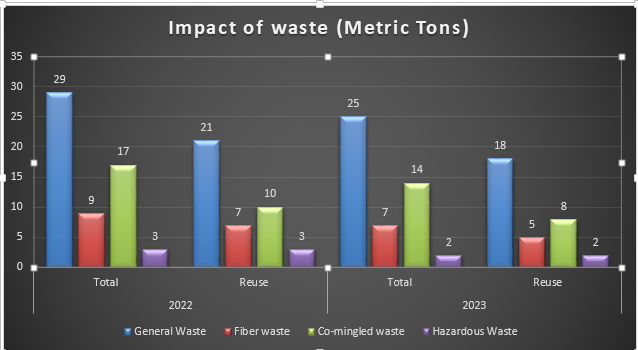
The university prohibits energy drink consumption to promote healthier habits. Students use environmentally friendly copies and registers with separation tags, reducing paper waste. Non-organic materials, such as bottles and cardboard, are collected by a designated vendor and transported to a local recycling facility. Some of disposal material like paper disposal items and plastic wires are utilized by department of design and interior and they made useable stuff with it. This sustainable approach minimizes the environmental impact, promotes recycling, and maintains a cleaner campus environment, aligning with the university's commitment to eco-conscious practices.
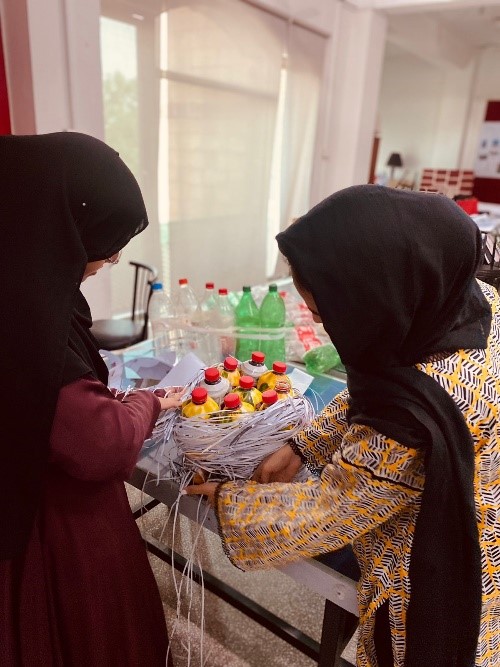
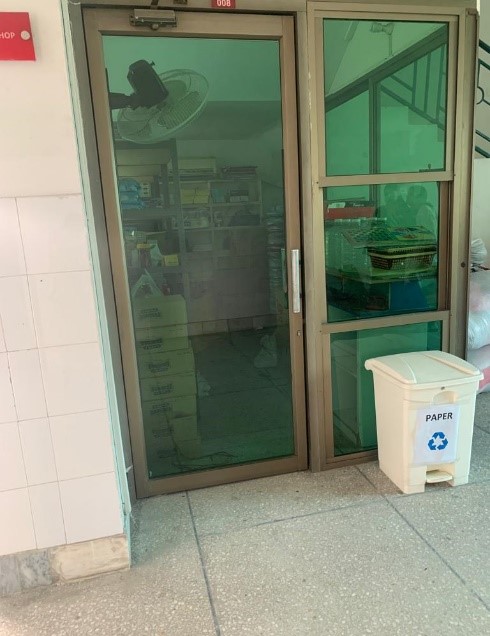
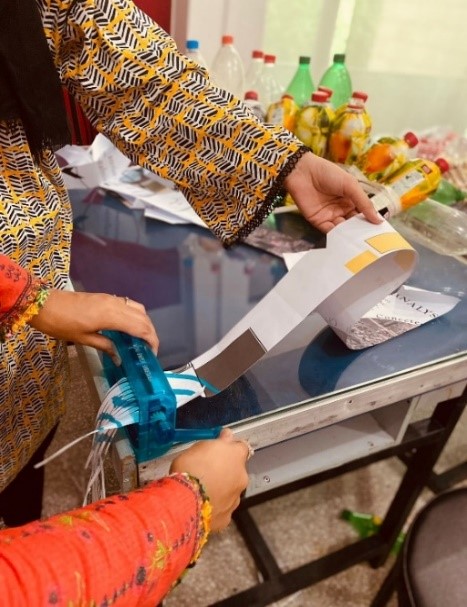
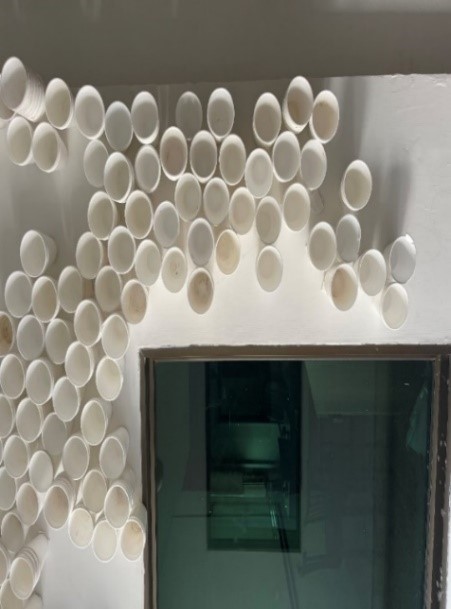
Design and Interior Department Creative Reuse of Paper and disposable items
The Department of Civil Engineering retrieves non-organic construction and renovation waste for reuse. These materials are repurposed in laboratory experiments and industry collaborations, promoting sustainability and resource efficiency, while contributing to academic research and practical applications within the field of civil engineering.
- Development of economical eco-friendly tuff tiles and bricks using by-products from industries in Pakistan
Development of Waste Marble Powder:
Marble dust is a waste product formed during the production of marble. A large quantity of powder is generated during the cutting process. The result is that about 25% of the original marble mass is lost in the form of dust. Marble dust, a solid waste material generated from the marble processing is used by the University either as a filler material in cement or fine aggregates while preparing concrete. This project is successfully implemented by Department of Electrical Engineering.
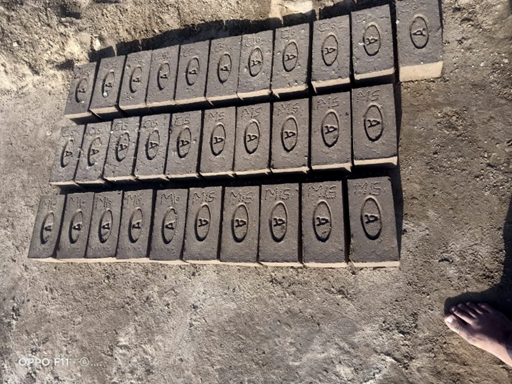
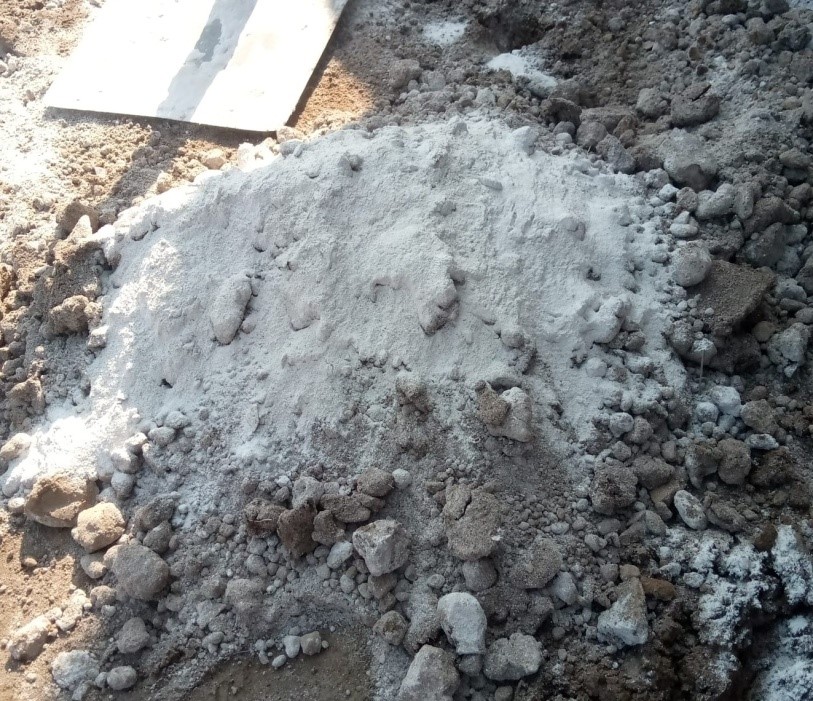
2. Mechanical Behavior of TUFF Tiles Incorporating Industrial Waste
Project of the mechanical behavior of TUFF tiles incorporating industrial waste is a Project of growing interest in the field of construction materials and related industry. TUFF tiles are a type of durable and versatile flooring material widely used in commercial and residential applications. The incorporation of industrial waste into TUFF tiles has gained attention due to the potential environmental and economic benefits it offers.
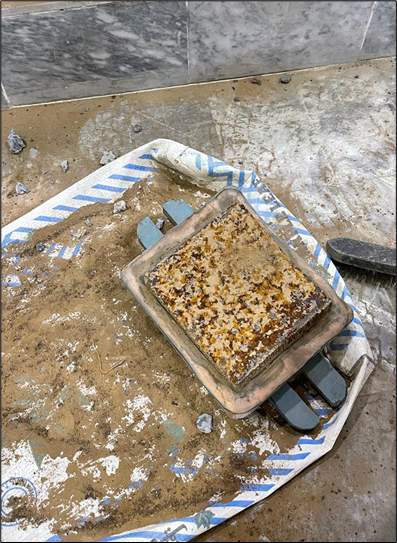
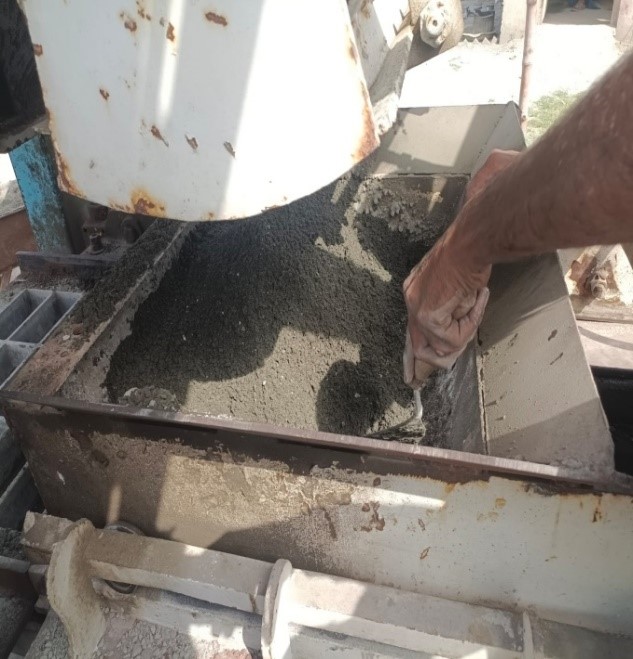
Mixing & casting/molding of tuff tiles
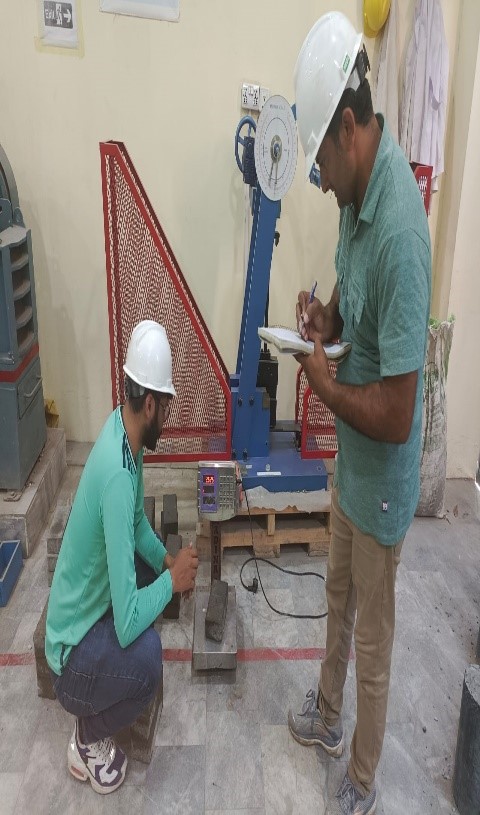
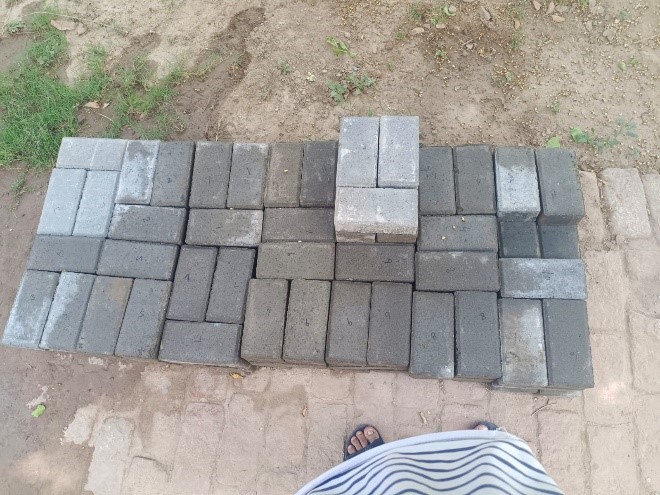
Curing of tuff tiles
Art installation of electric wires
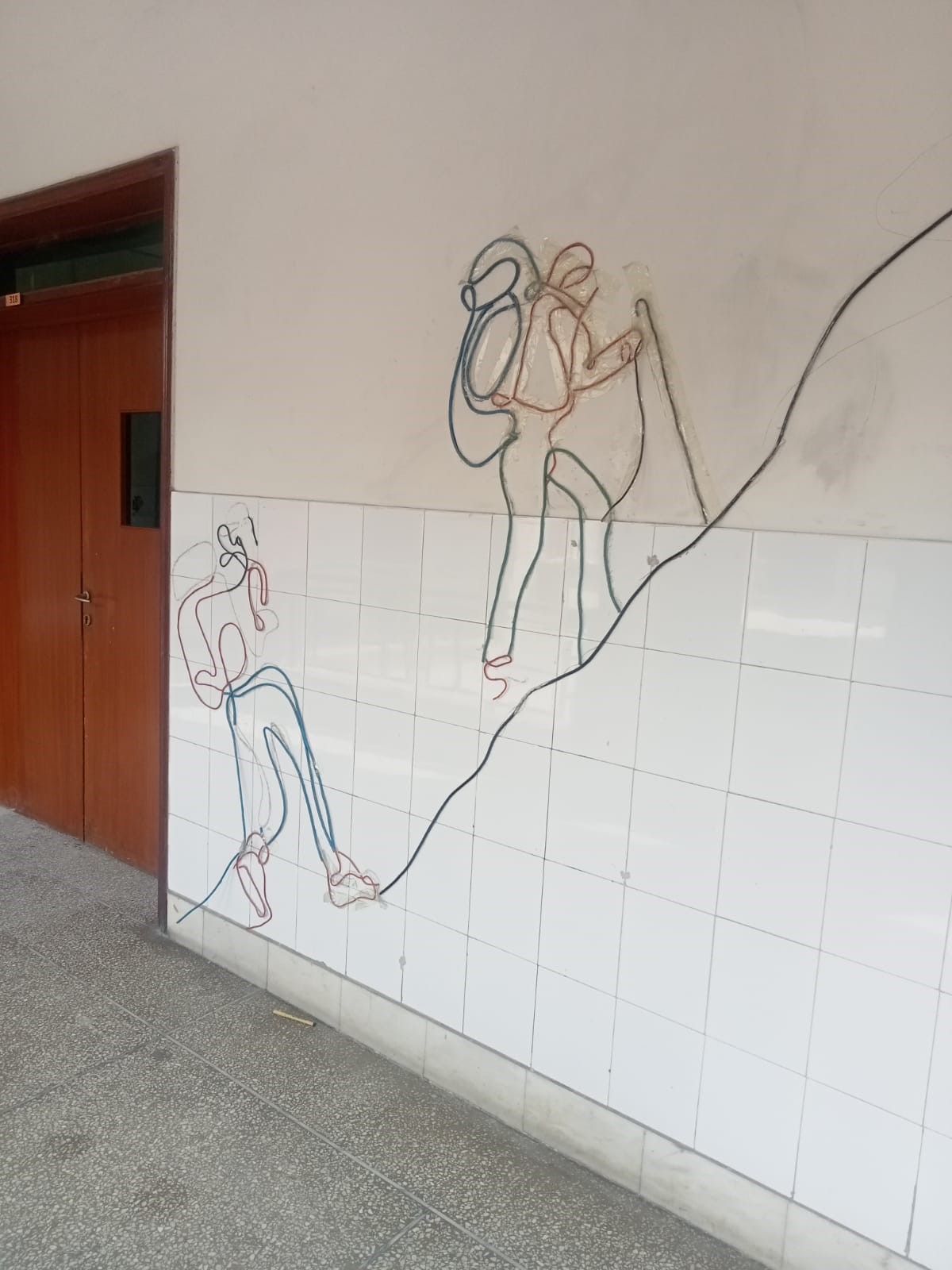
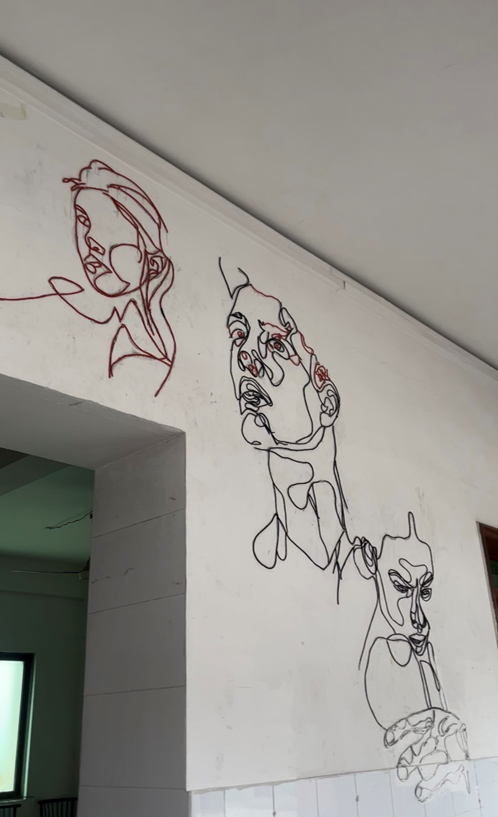
Old electric wires are used to create artistic expressions to give decorations to the wall
Waste Management Policy
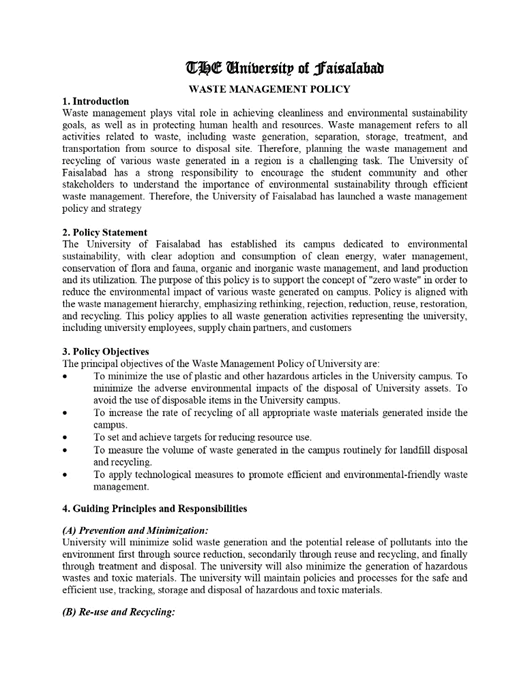
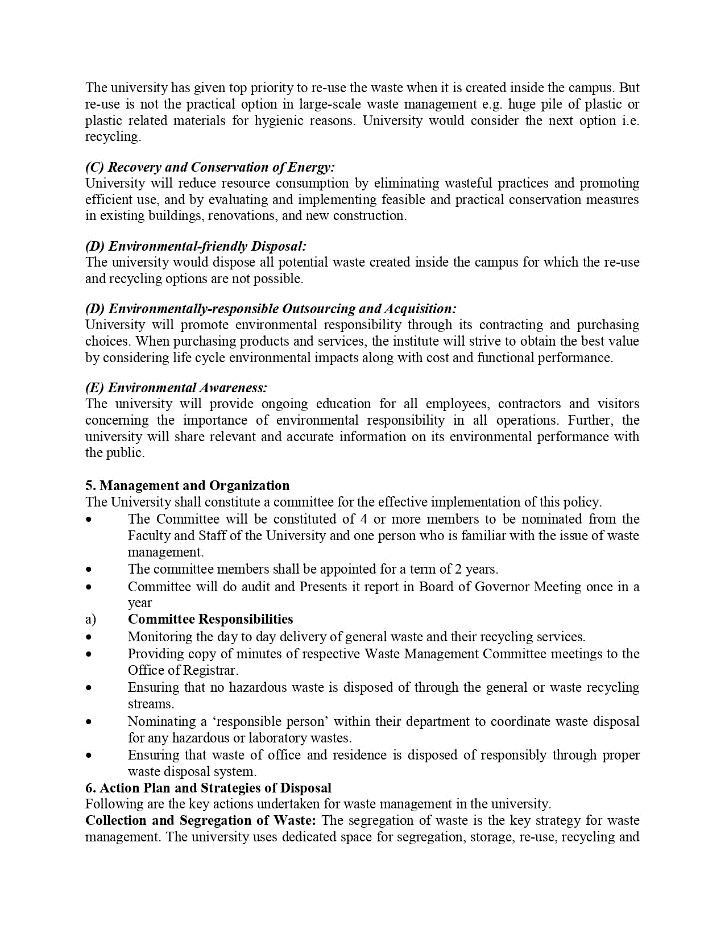
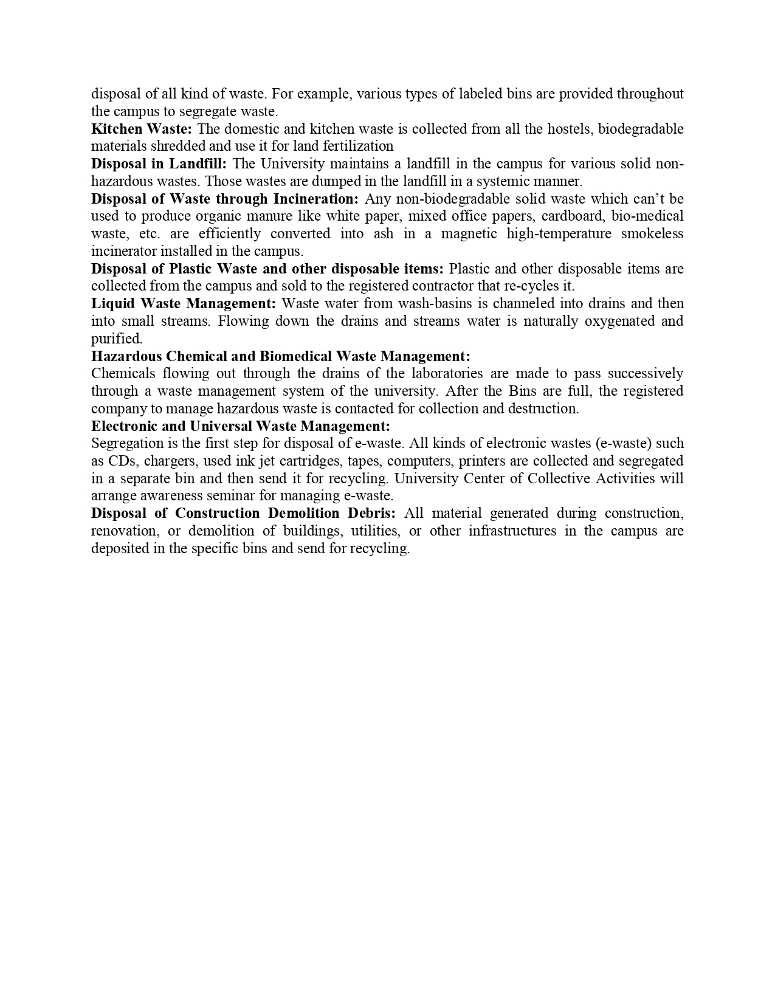
Policy Implementation Impact Last Two year 2022-2023
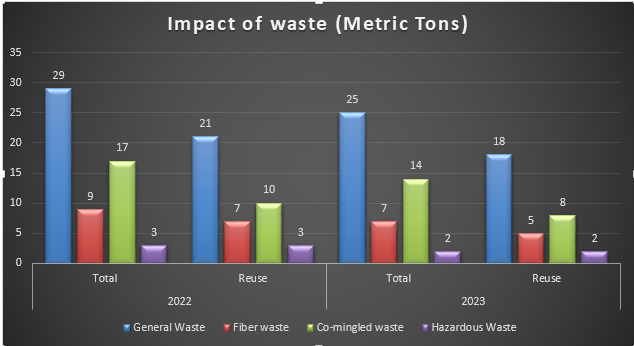
Organic waste within the campus are refectory, canteen and cafés. The large amount of branch and leaf wastes generated as a result of pruning and maintenance processes. Separated Trash bins has been placed in different areas in the University to drop Plastic, paper, organic and general waste. Furthermore, the large amount of branch and leaf wastes generated as a result of pruning and maintenance processes of plants and trees. The university has its own cattle form, and all waste food and leaves are transferred to the cattle form and fed to the animals.

Segregated Trash Bins for Plastic, paper, organic and general waste to meet with Sustainable Campus Waste Management
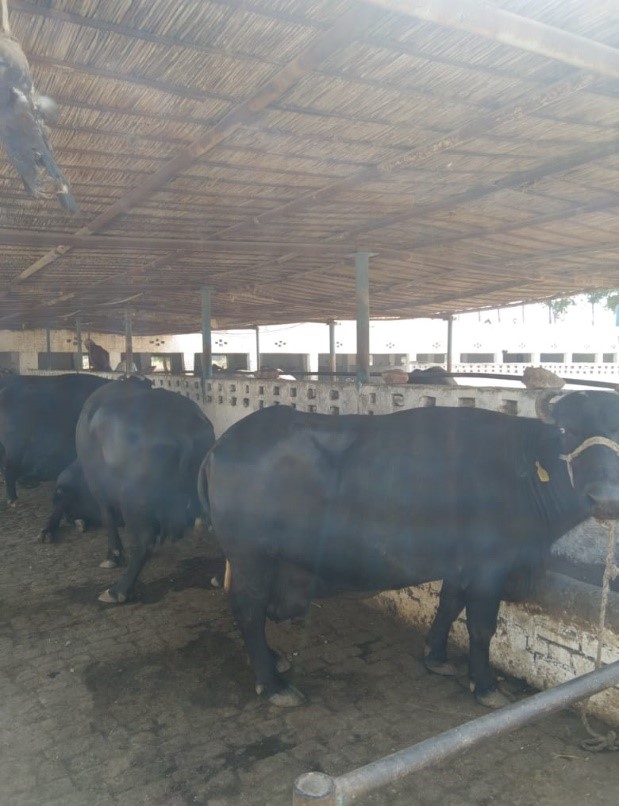
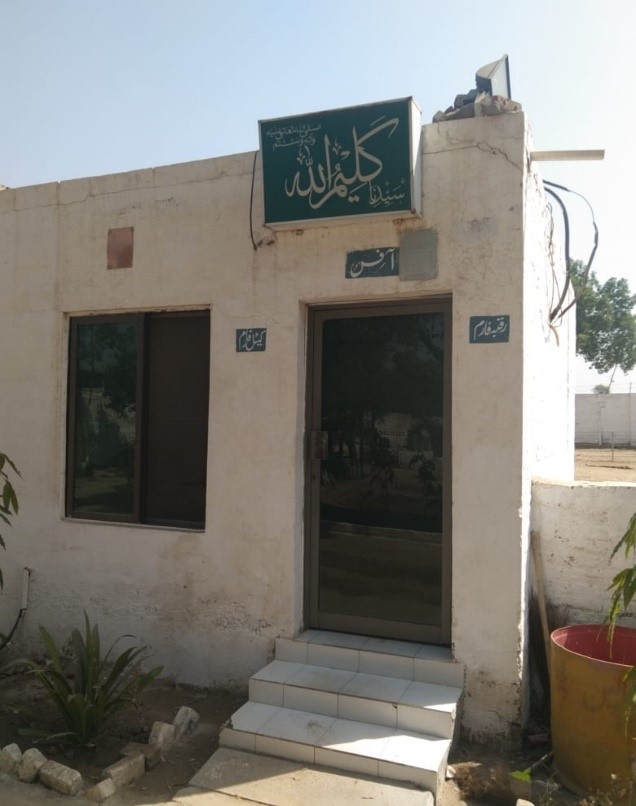
Project to Utilize Organic Waste:
Carrot processing industries produce 25–30% of waste in the form of carrot peels, and pomace which contain a large amount of high-value bioactive components. project is initiated by Department of Dietetic and Nutritional Science. Purpose is to prevent food wastage resulting in carrot pomace waste. Project is implemented in the University cafeteria.
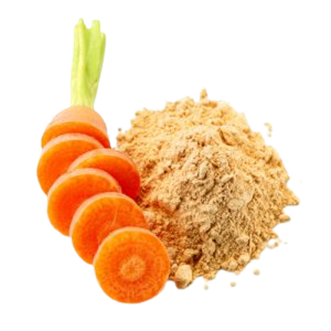
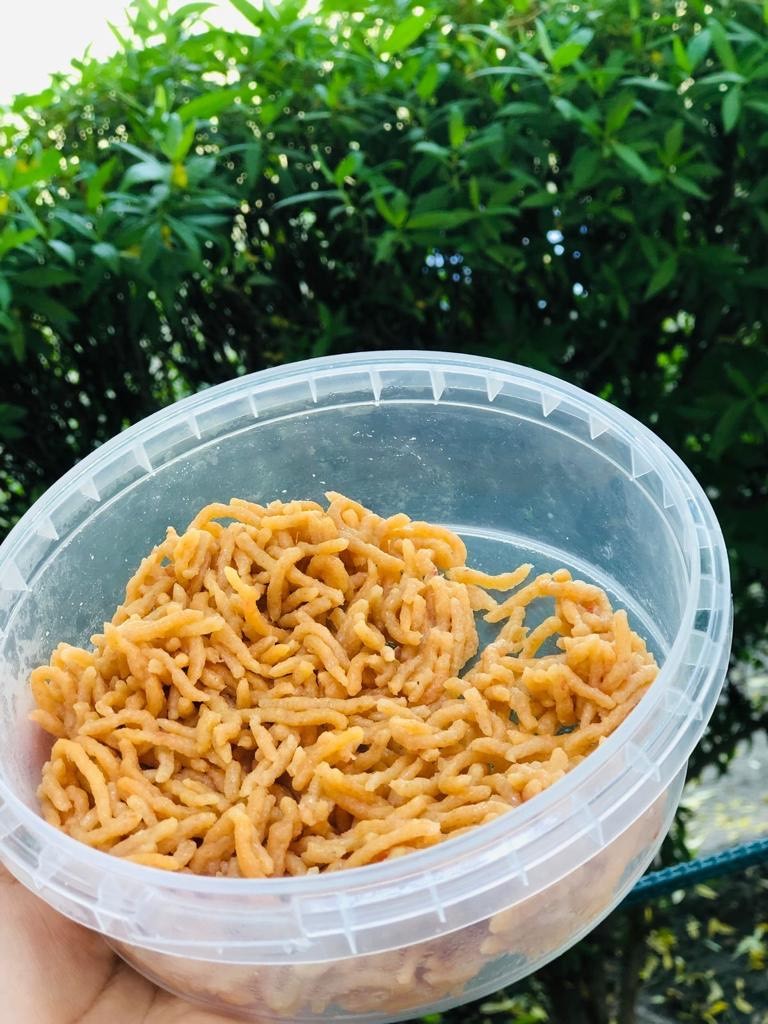
Noodles with the Carrot peels
Natural urea forms during the decomposition of vegetable and fruit peels
By composting vegetable and fruit peels in soil, natural urea is produced that is further use to fertilizer the plants.
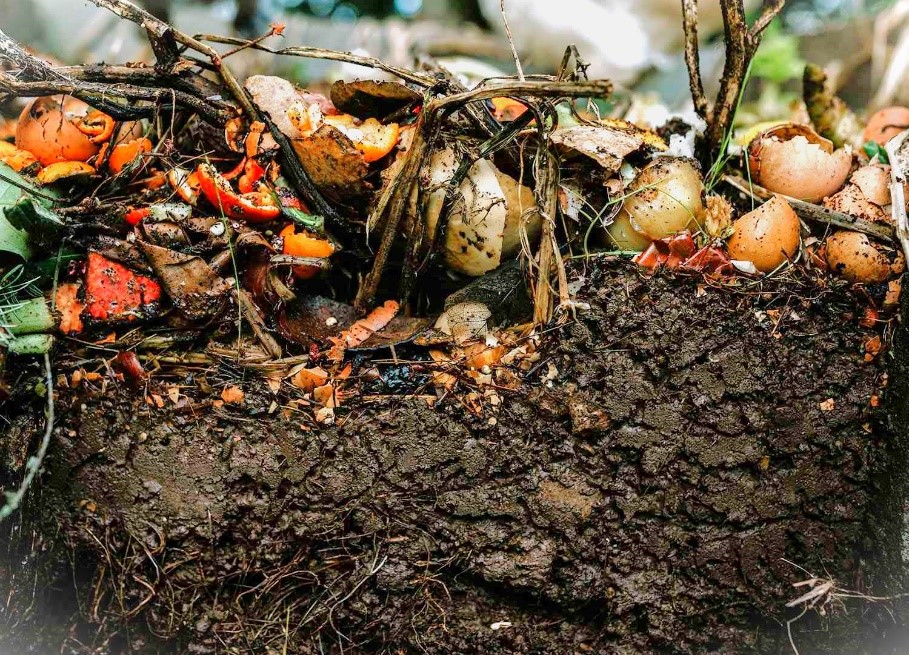
PET Plastic waste:
Polyethylene terephthalate, also called PET, is the name of a type of clear, strong, lightweight and 100% recyclable plastic. olyethylene terephthalate monomer is made by combining two organic compounds, which are terephthalic acid (benzene-1,4-dicarboxylic acid) and ethylene glycol Unlike other types of plastic, PET plastic is not single-use -- it is 100% recyclable, versatile, and made to be remade.
Implementation:
Project is in implementation phase and from running year it will be in part of construction activities.
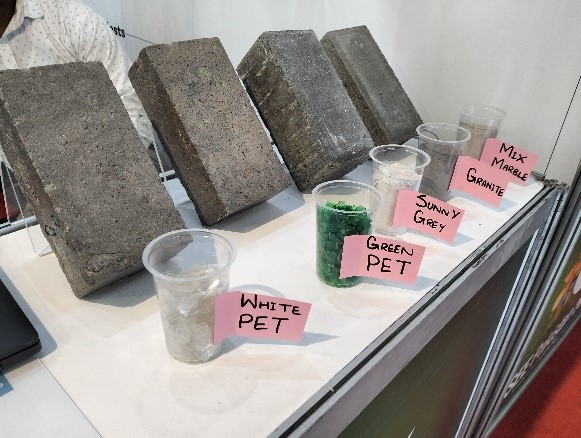
PET Plastic waste project that is now part of construction activities
| Type of waste | Weight (ton) | |
|---|---|---|
| Total | Reused | |
| Organic | 29 | 21 |
| Food waste | 09 | 07 |
| Leaf | 17 | 10 |
| Miscellaneous | 03 | 03 |
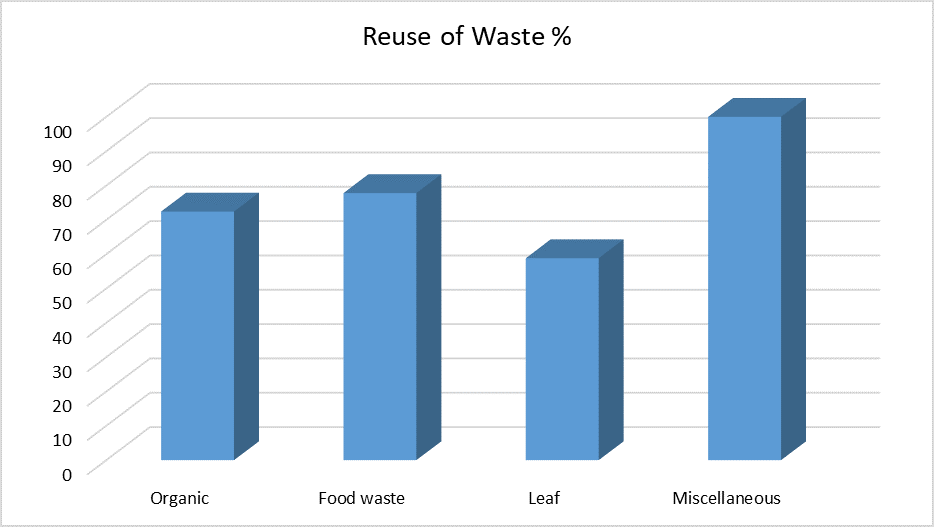

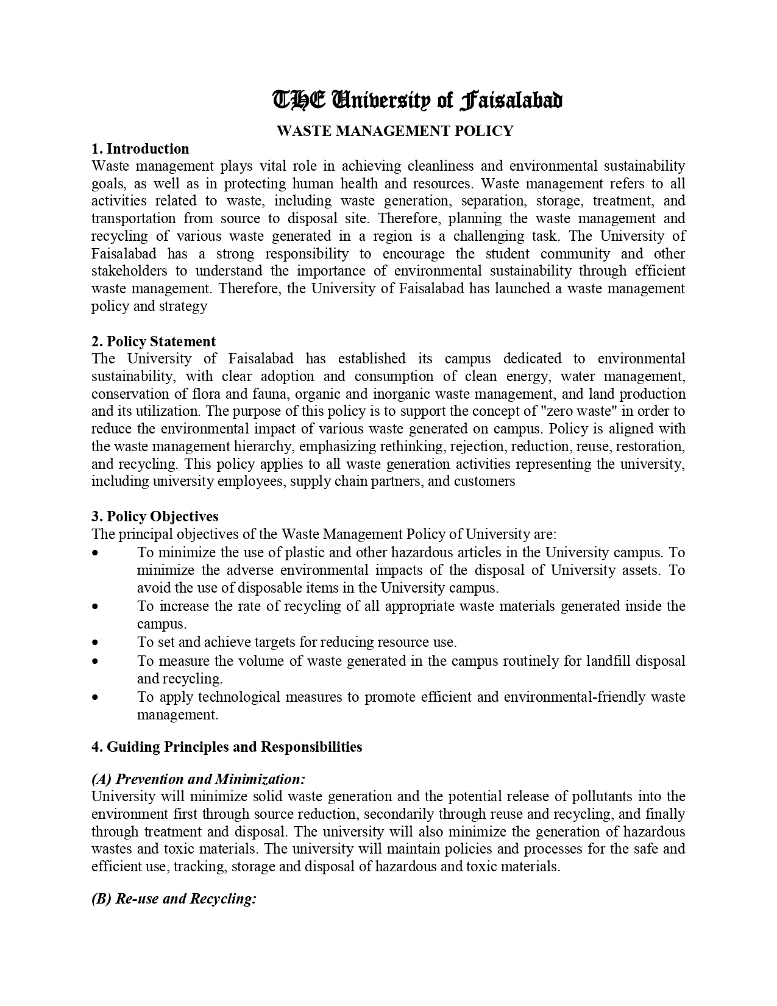
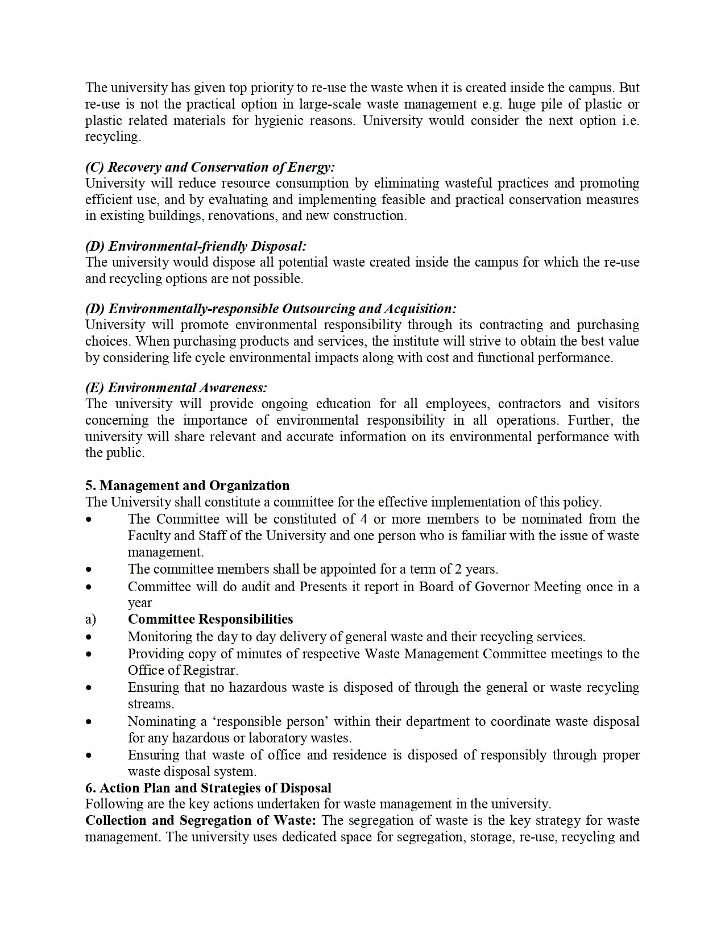
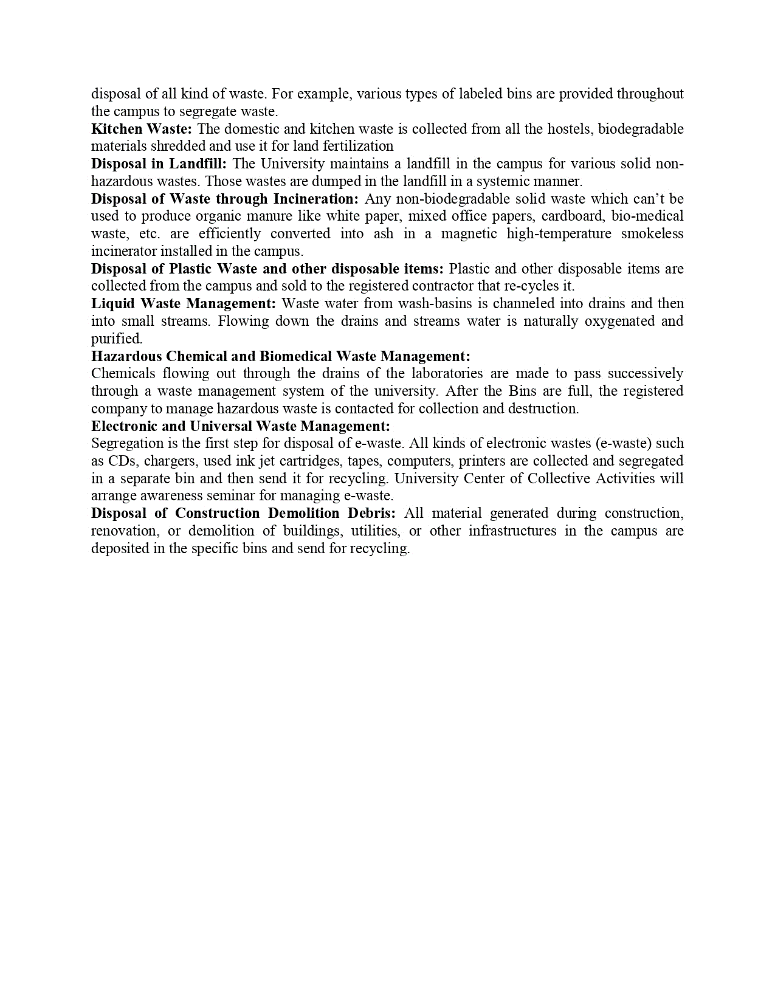
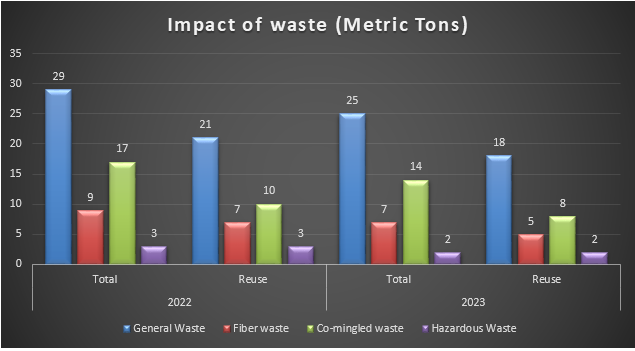
- Photocopy machine has been closed. Teaching faculty is directed to use LMS Portal to Provide Lecture Handouts, Electron books, Quizzes, and Assignments to Students To reduce the use of paper.
- University has banned polyethene bags since 2019. students are instructed to take own disposable bags. However, University also provided the cloth bags to students and staff.
- All office notes, Office orders are disseminated via email.
- Online Public Excess Catalog (OPEC) is software where students and faculty members can search books remotely via TUF website. Library automate software KOHA has been install where students and faculty members can issue and return books online.
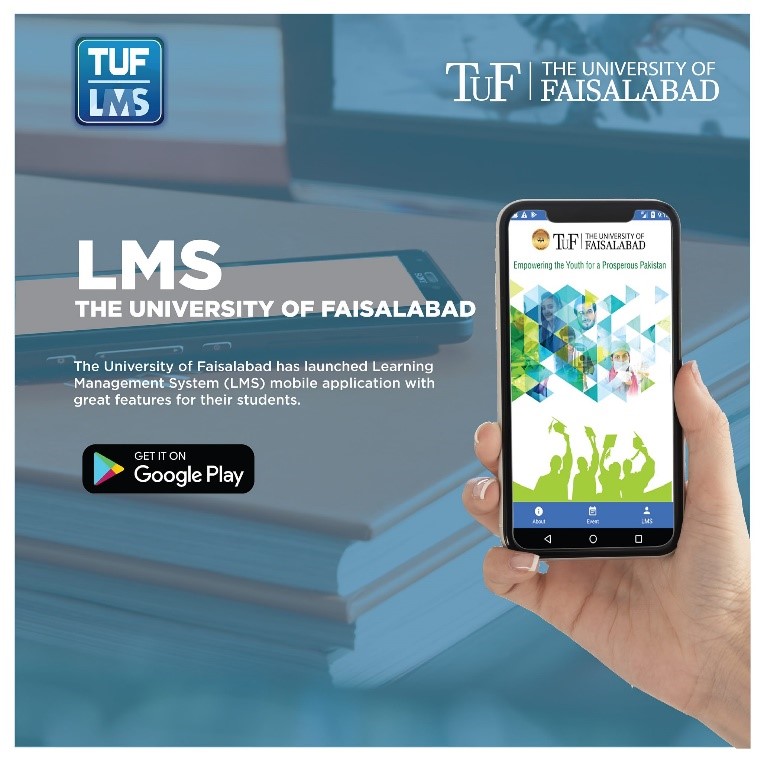
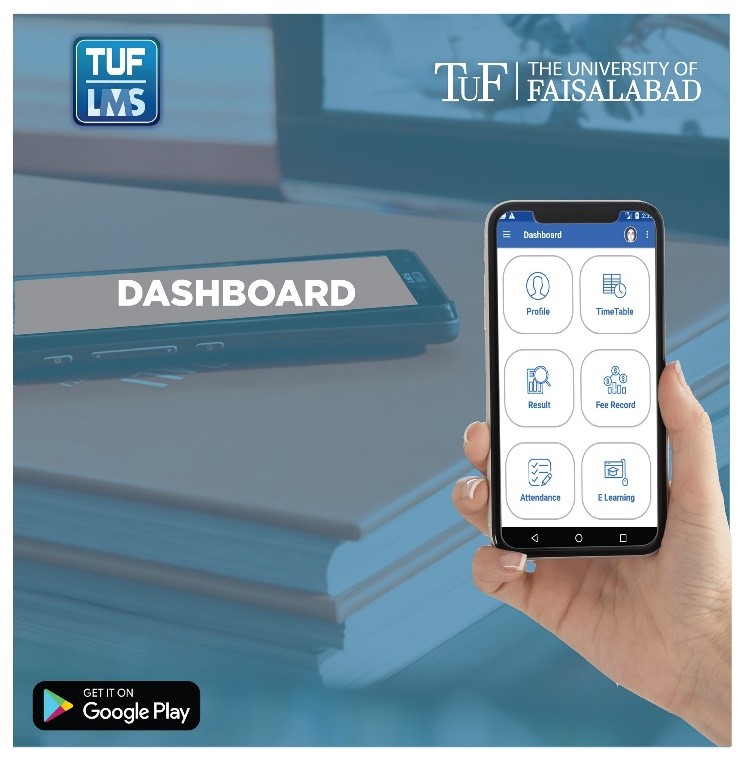
Interface of Mobile Application TUF Learning Management System
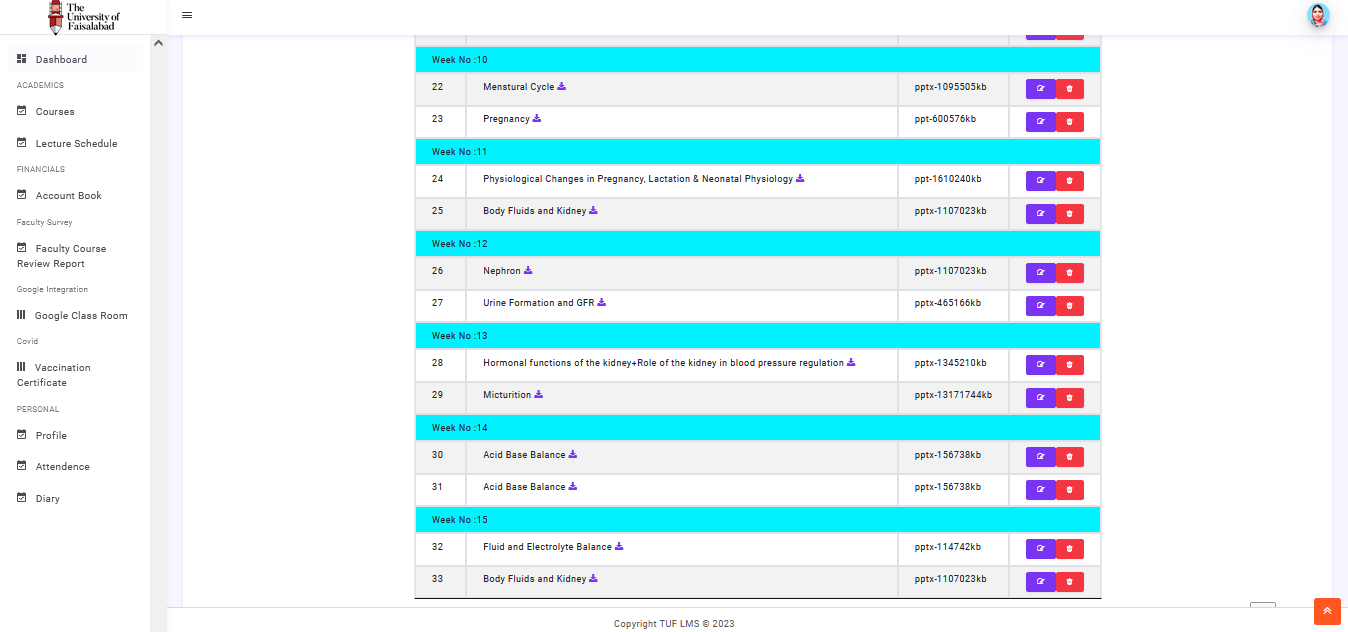
The Faculty Learning Management System Interface for Course Material"
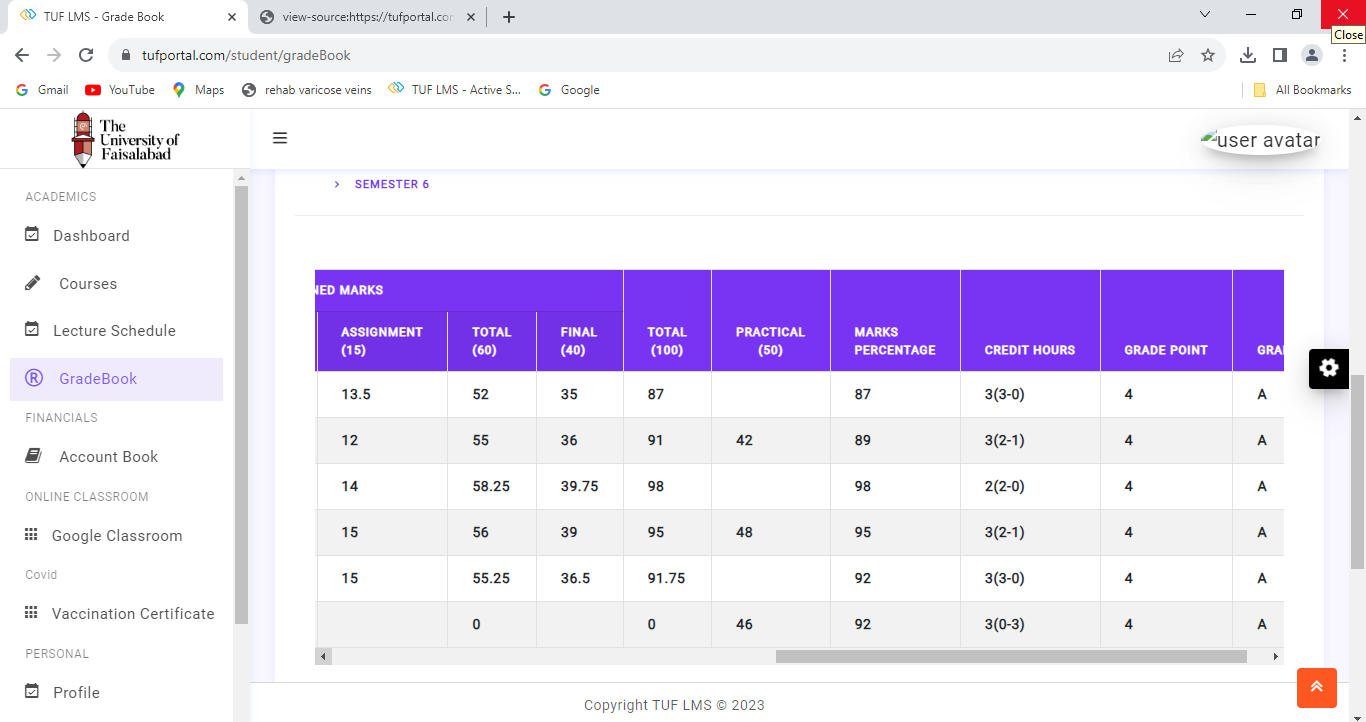
Click from Accessing Results through the Student Learning Management System
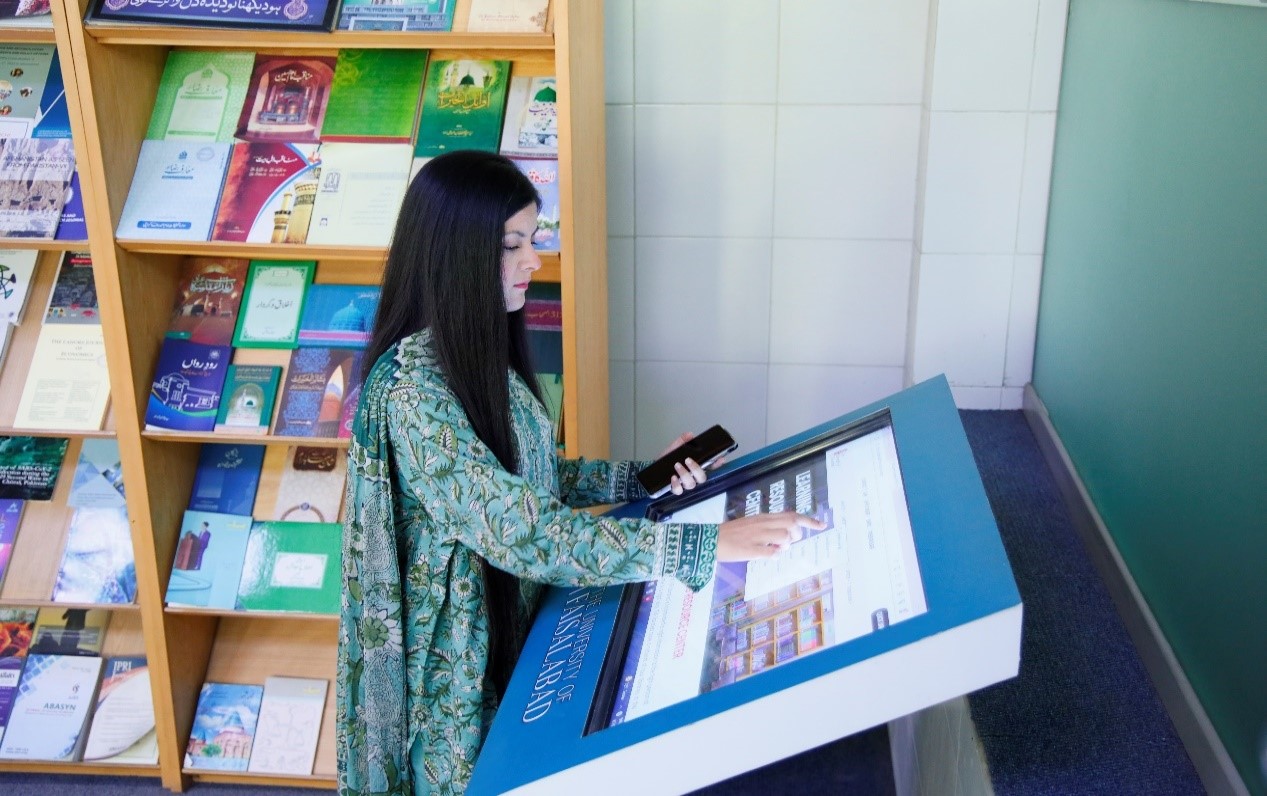
KOHA has been installed where students and faculty members can issue and return books online.
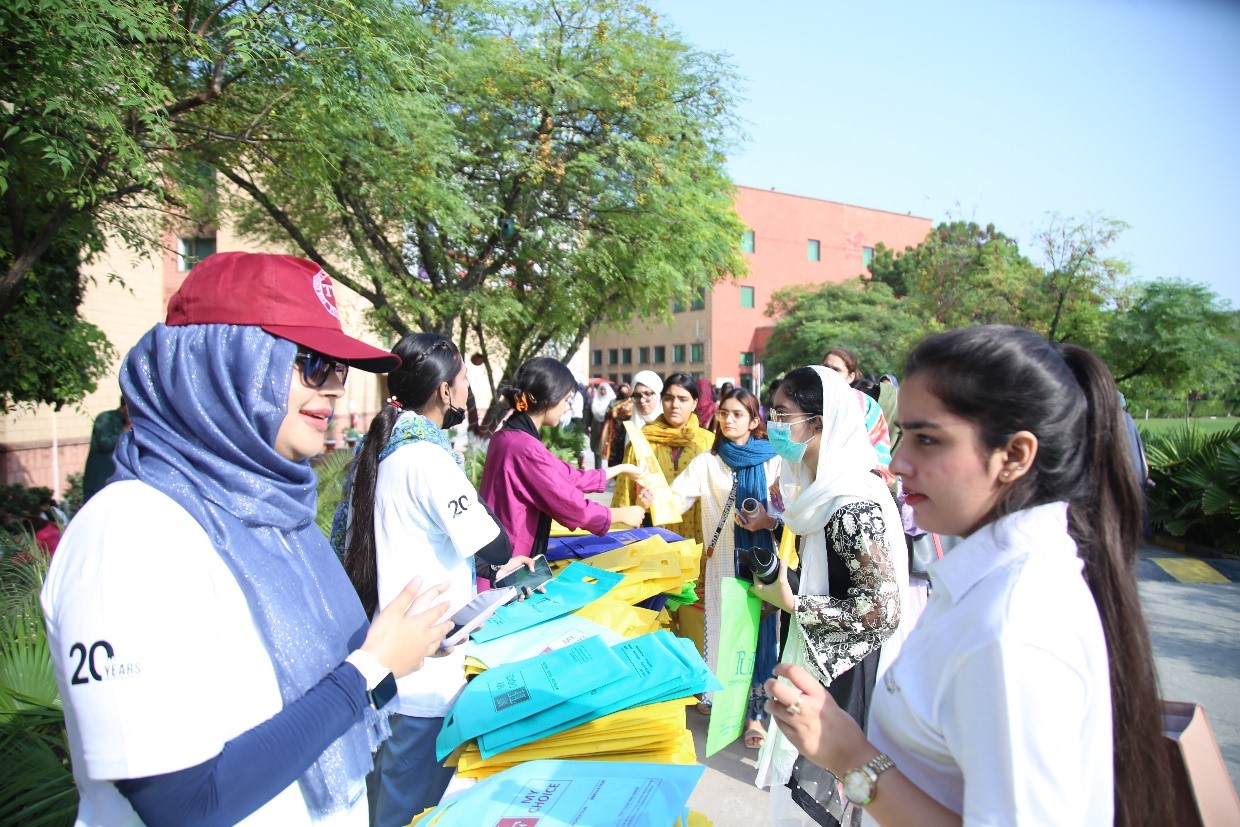
Free Distribution of reusable bags in the campus and plastic bags are charged
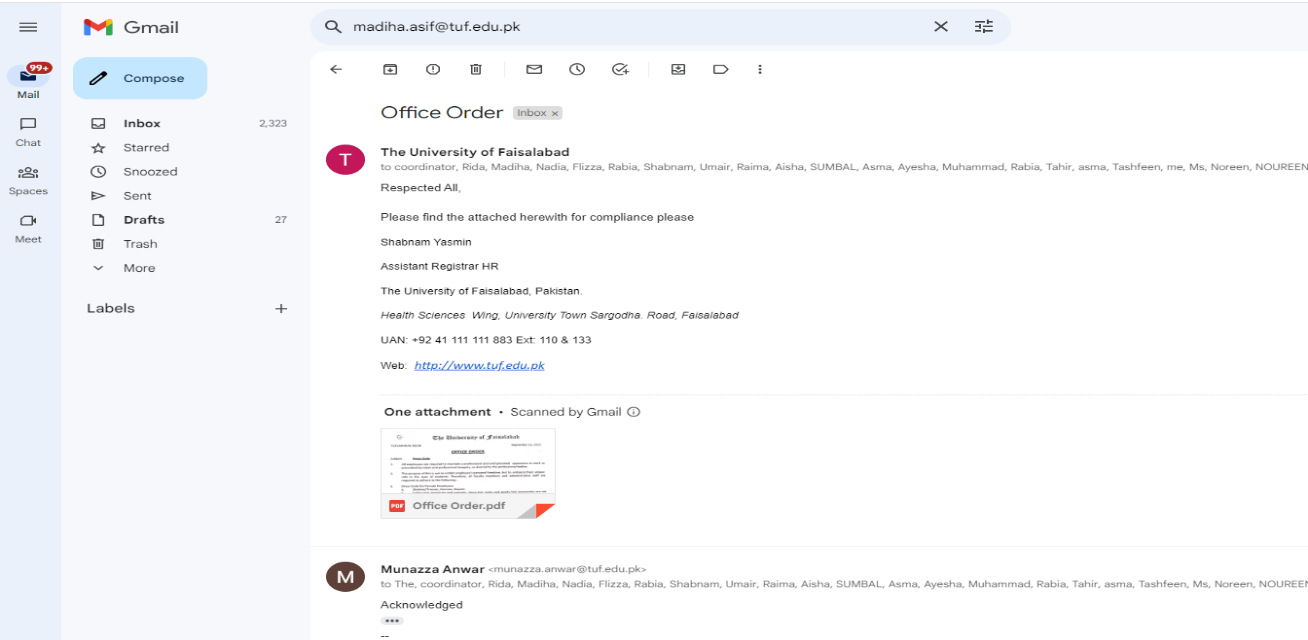
Email is used by faculty and staff for communication
|
Table: 01 Paper Rim Demand from Purchase office |
|
|
Year |
Paper Rim |
|
2020 |
3000 |
|
2021 |
2200 |
|
2022 |
1500 |
|
2023 |
900 |
GRAPH IMPACT:
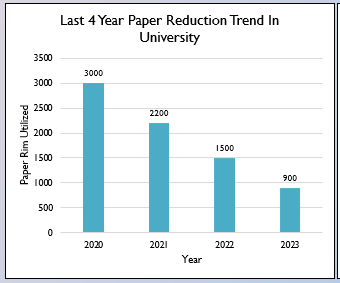
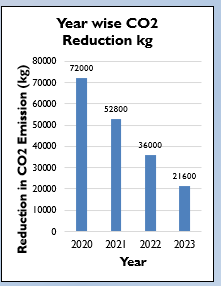
IMPACT:
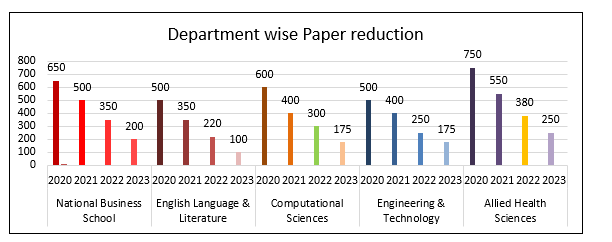
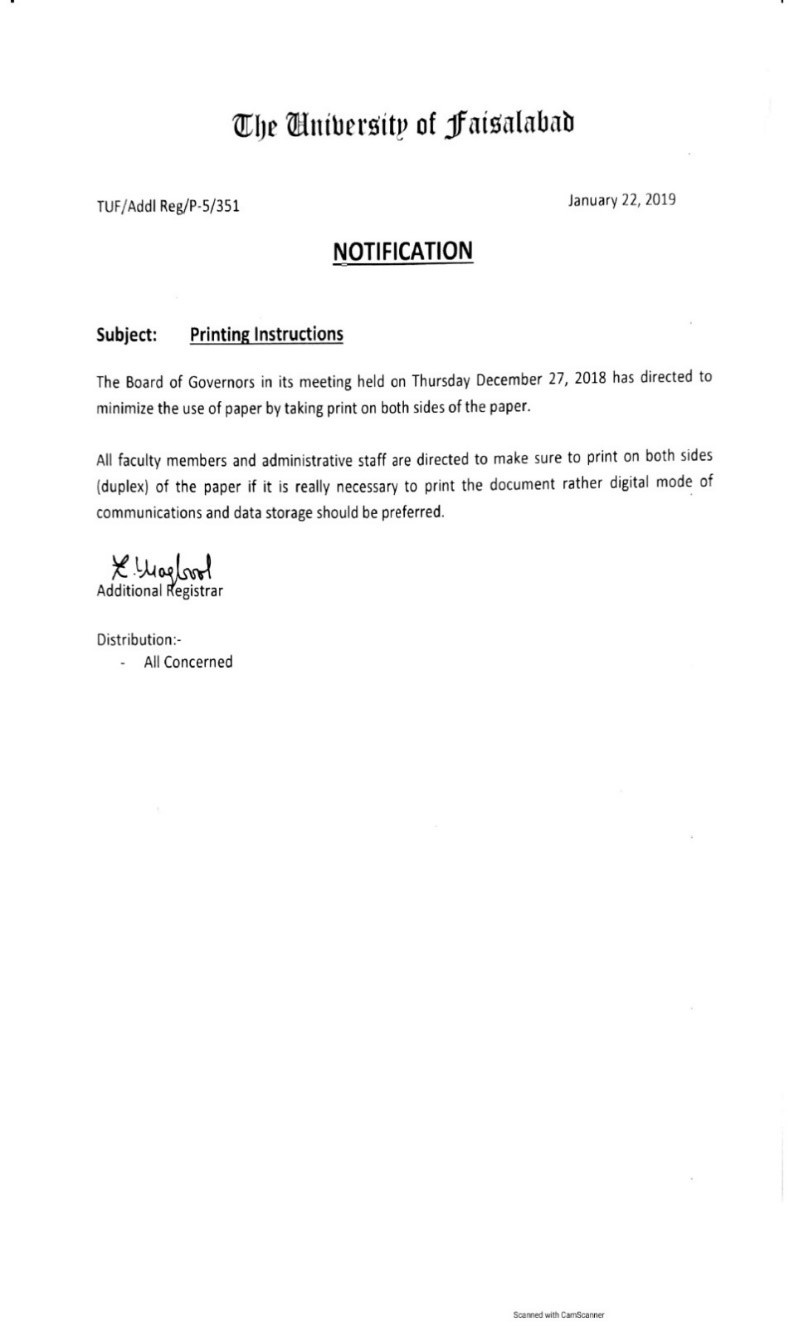
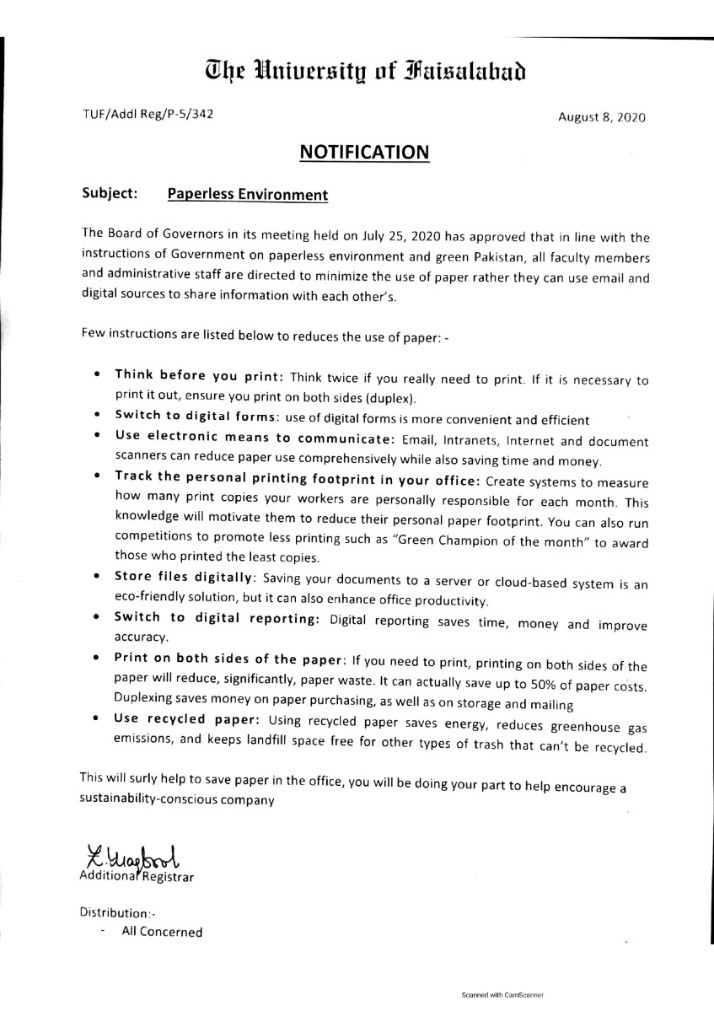

Reduce:
University encourages its students, faculty, and administrative staff to use ink pens rather than plastic ordinary ball points. The purchase office is also working to fulfil the goal of providing a number of ink pens as well as ink to each administrative and academic department.
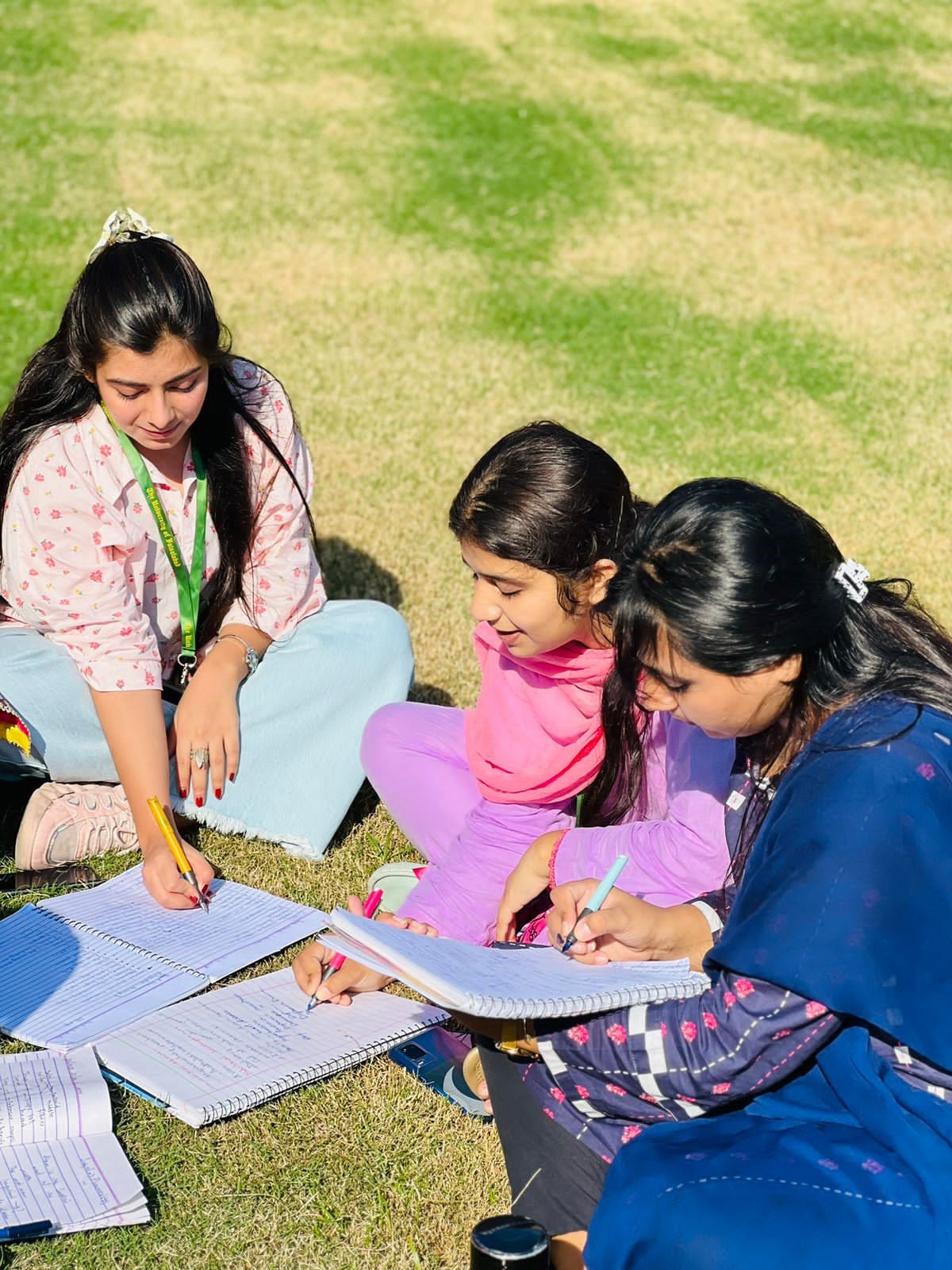
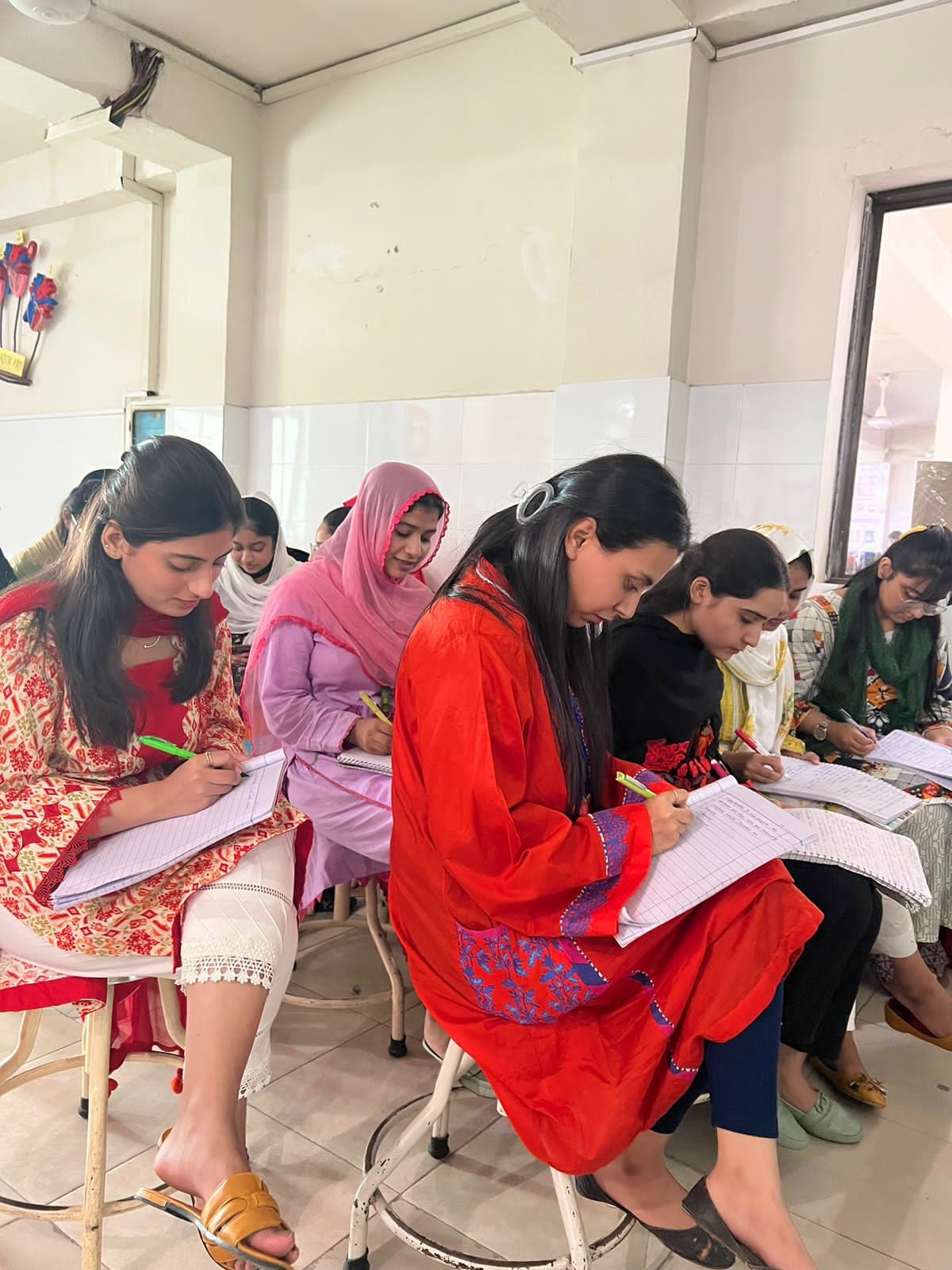
Preserving the Tradition: Students are using ink Pens Over Ballpoints
Recycling Programs:
- Lighting installation of keyboard keys with mesh
Department of Design and Interior used old keyboard keys and useless iron mesh to create an incredible light source that is not only appealing but also provides the impression of a beehive. When light shines through it, it produces an appealing ambiance.
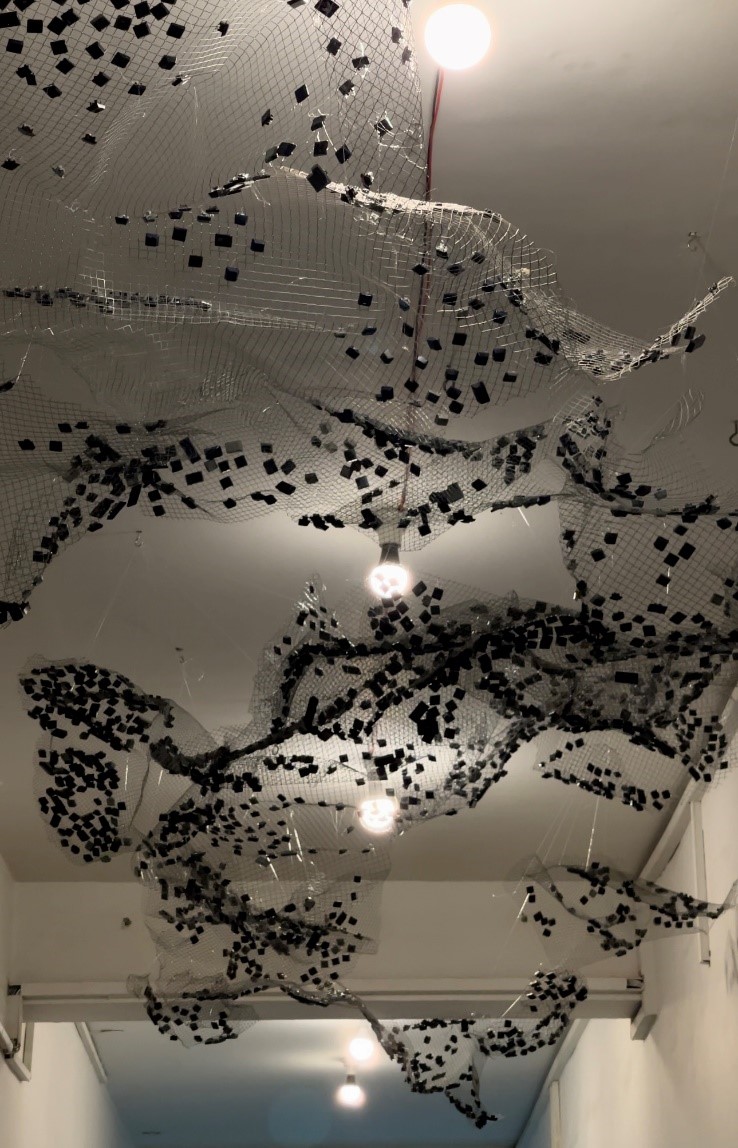
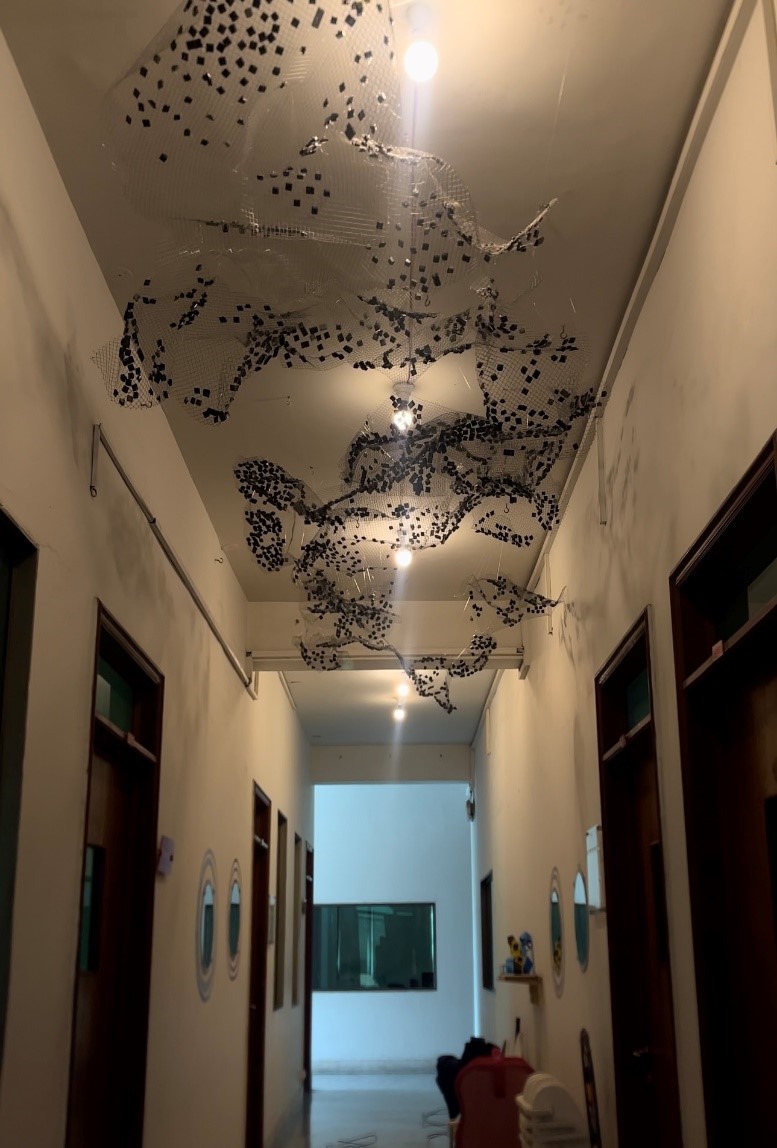
Actions towards Recycling : Repurposing Waste Keyboard Keys for Unique Décor
2) Art installation of electric wires
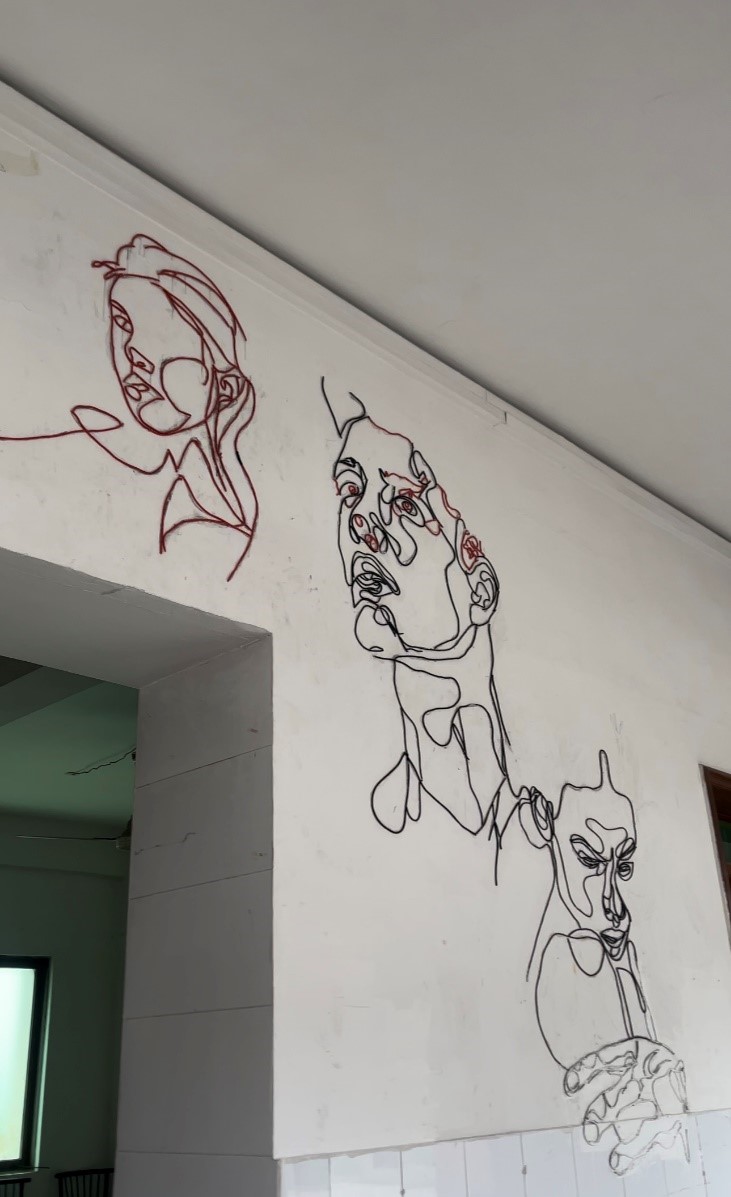

Old electric wires supposed to be wasted are used to create artistic expressions to give decorations to the wall
3) Recycled Furniture
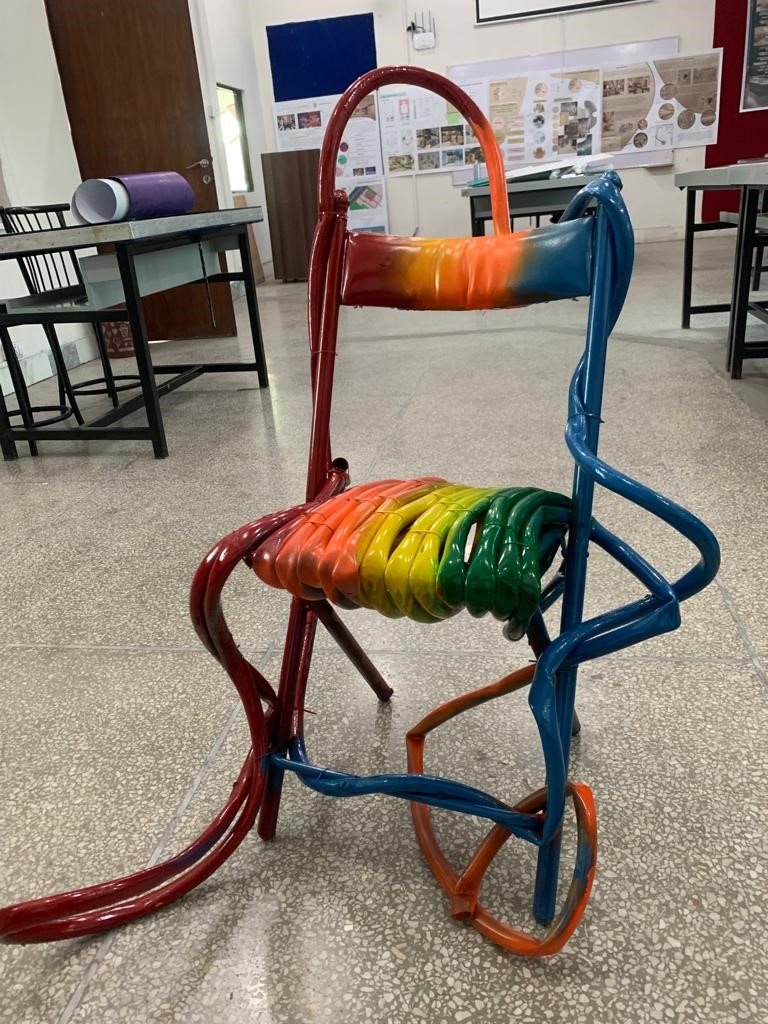
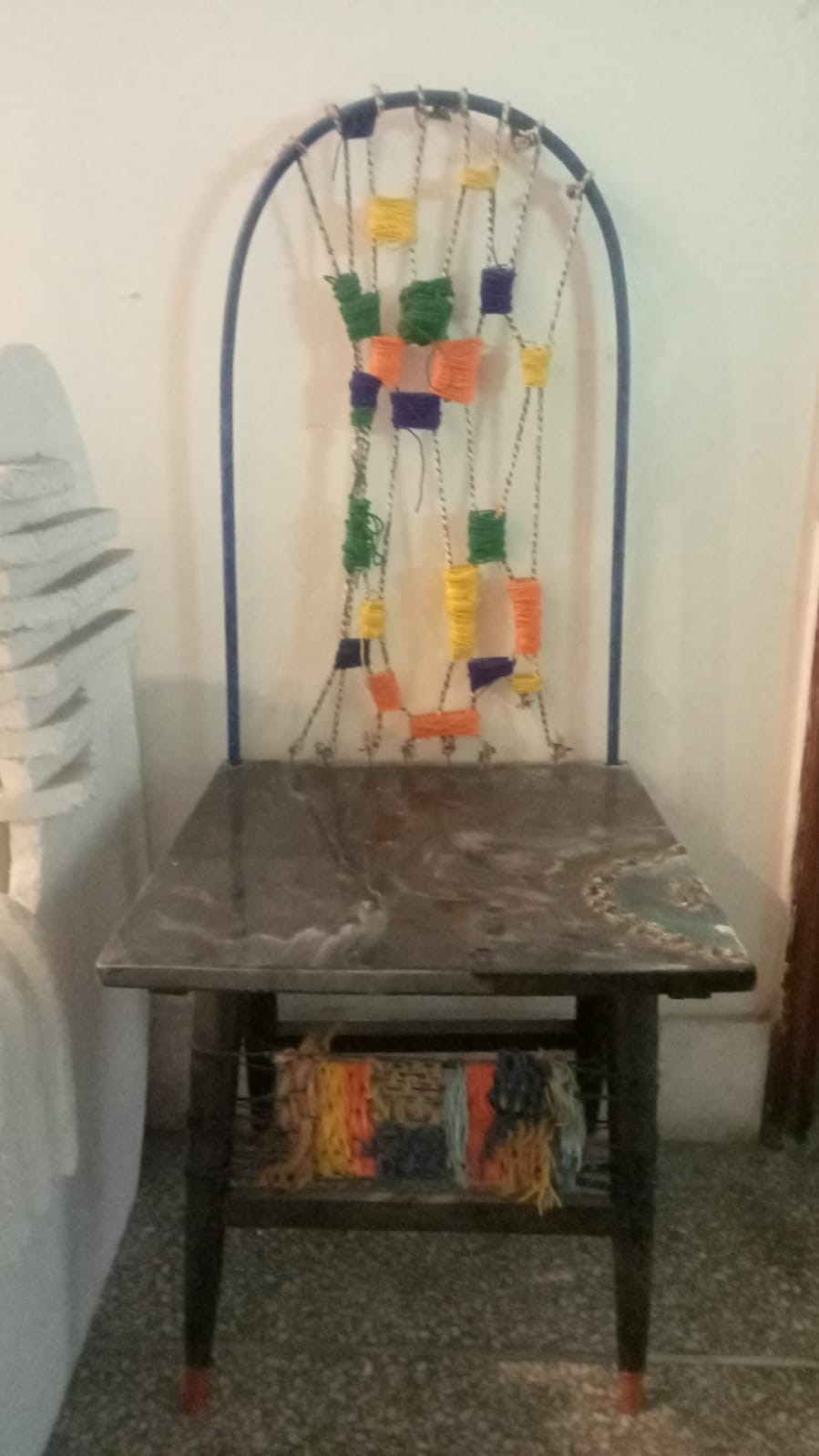
Piece of furniture that is broken and no longer in use is recreated.
4) Old Wall Clock into Table
Old Wall clock and old decorations have been given a second life and have been upcycled to make new coffee table. This was conducted as furniture design project motivating students to use recycled materials in interior decoration.
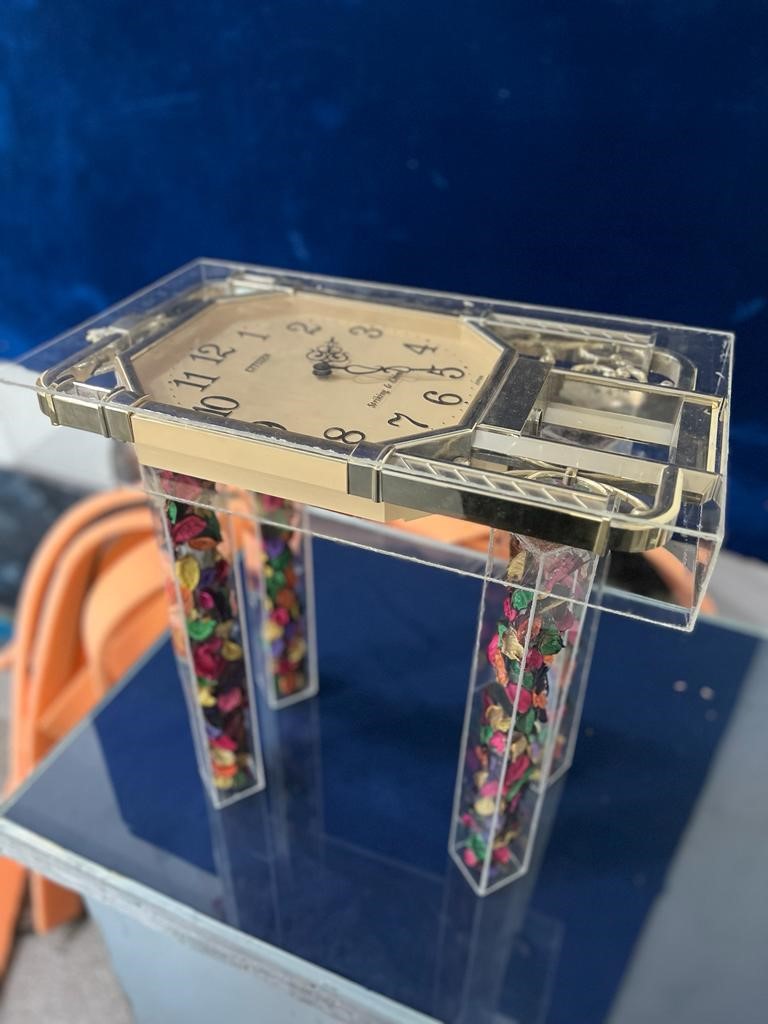

Timeless Upcycling: Old Clock and Decor Transformed into Unique Coffee Table
Re-Use:
The university has significantly reduced plastic bottle usage on campus by encouraging 70% of students and staff to switch to reusable water bottles, coffee mugs, and other essentials. This eco-friendly initiative promotes sustainability and minimizes plastic waste within the university premises.
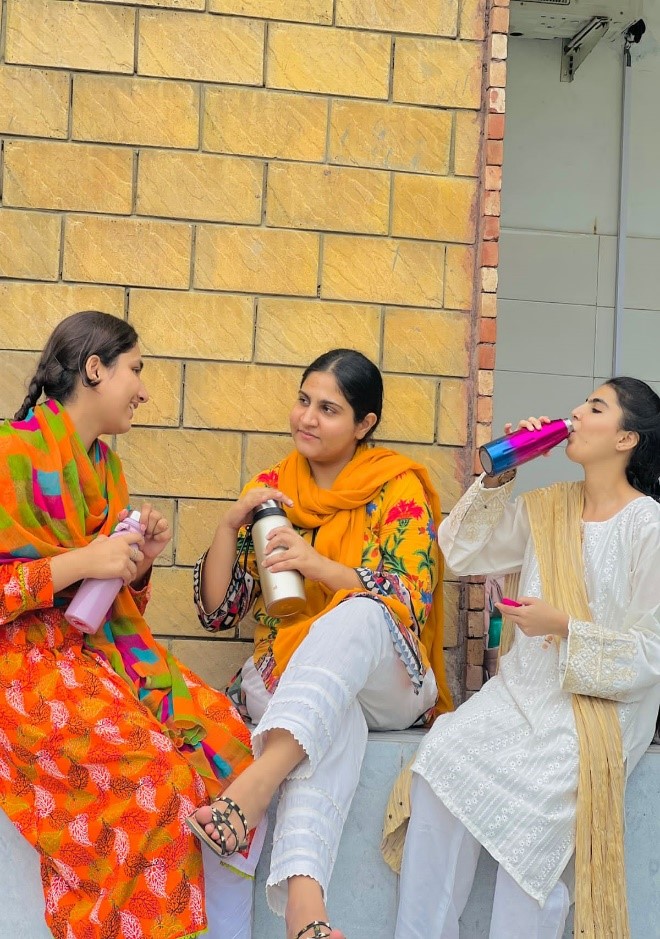
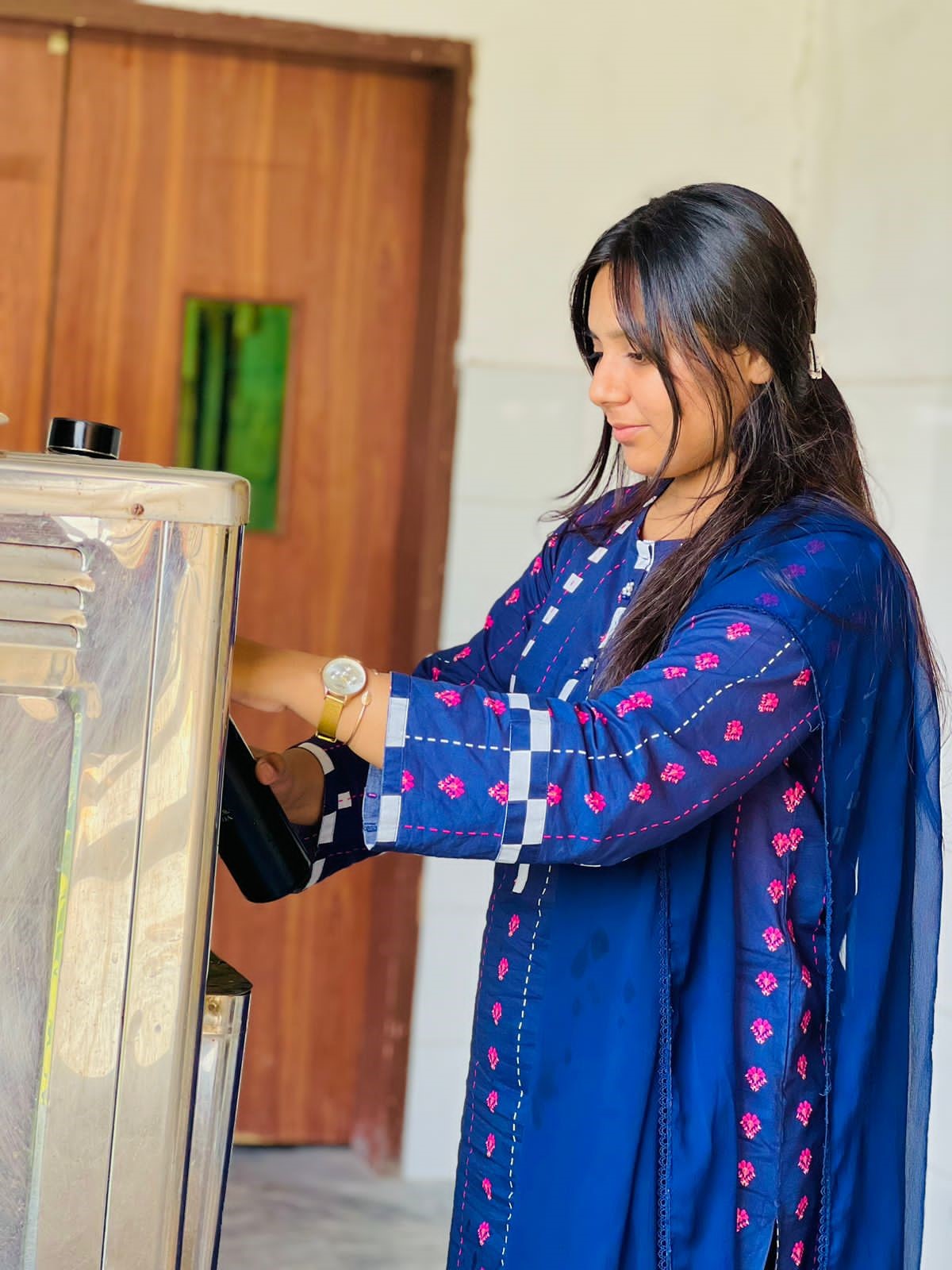
Promoting the culture of Reusability: Students Lead the Way in Bottle Refilling
Influence on compressive and tensile strength properties of fiber-reinforced concrete using polypropylene, jute, and coir fiber
Reinforced concrete is commonly used in buildings, dams, highways and so on. The high cost of steel in reinforced concrete is a major concern. The main goal of this research is to reduce the cost of steel by reducing the area of steel using jute and polypropylene fiber ropes. The cost analysis shows that this research is beneficial to reduce the cost of concrete steel-reinforced beam by using jute and poly- propylene fiber ropes wounding on steel bars.

Effect of Lime, Fly Ash and Mat Fiber on Strength and Permeability Characteristics of Sub base Material
Road pavement failure mostly occurs due to poor selection of material or poor compactive effort. Roads and highways are the most important components of infrastructure development. This research work is carried out to investigating the effect of Lime, Fly ash and Mat fiber on the strength and permeability characteristics of Sub base material. It has been observed that the performance characteristics of pavement can be enhanced by addition of lime and fly ash in the sub base.
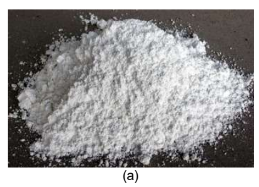
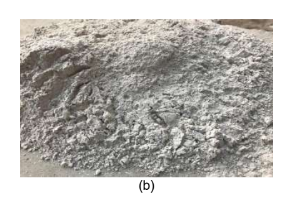
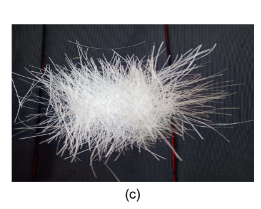
Fig 2- a) Lime, b) Fly ash, c) Mat Fiber
